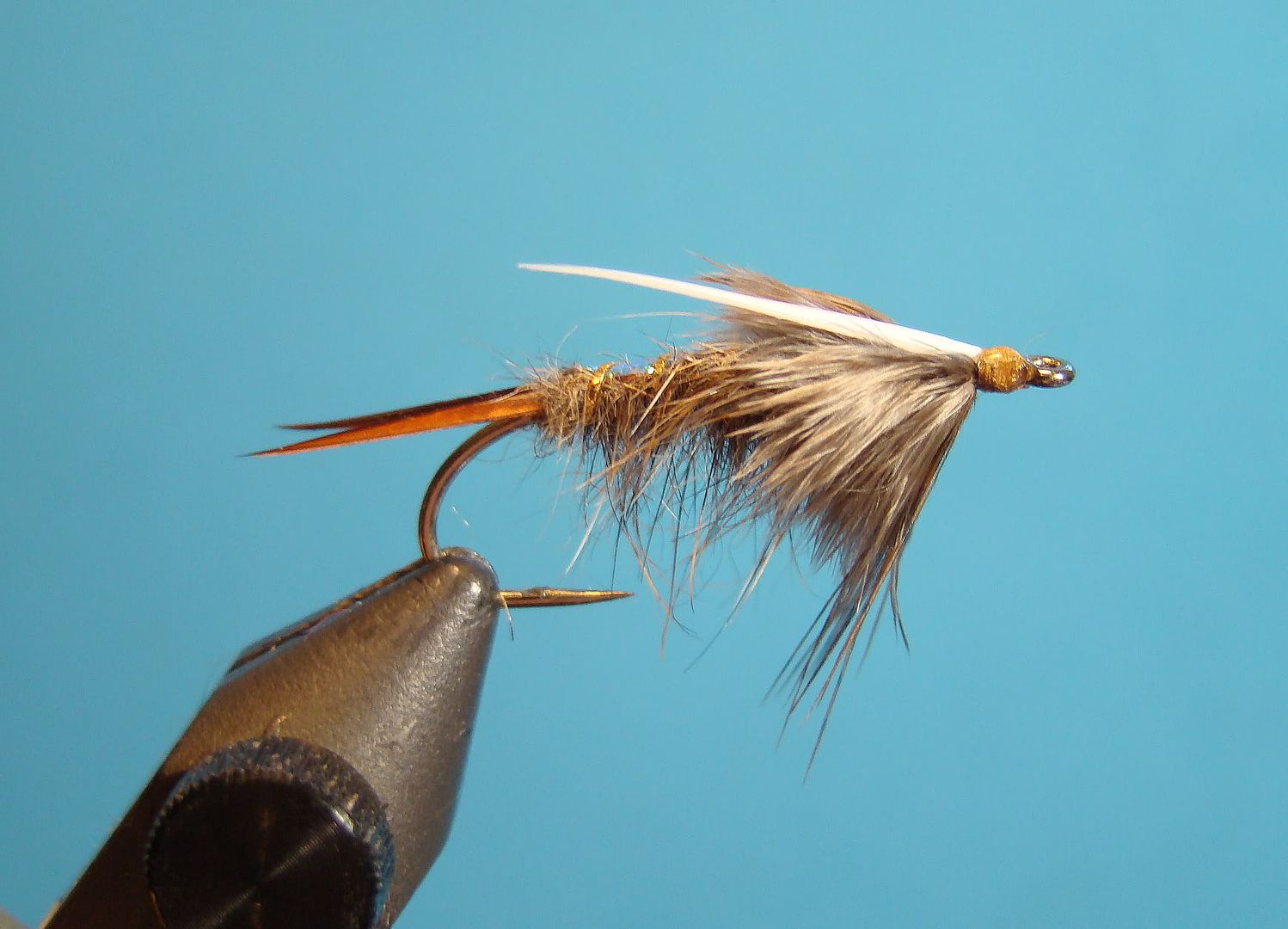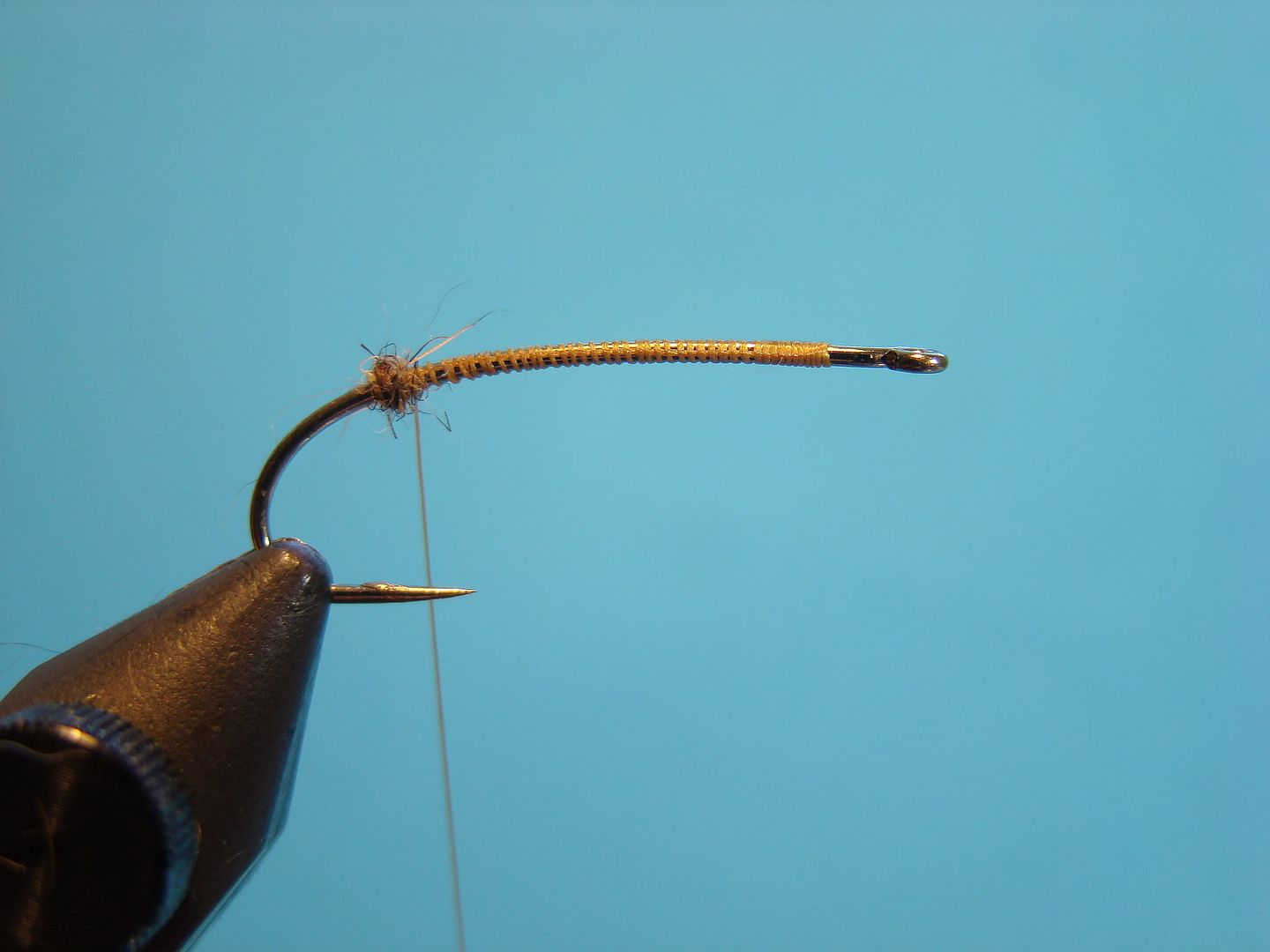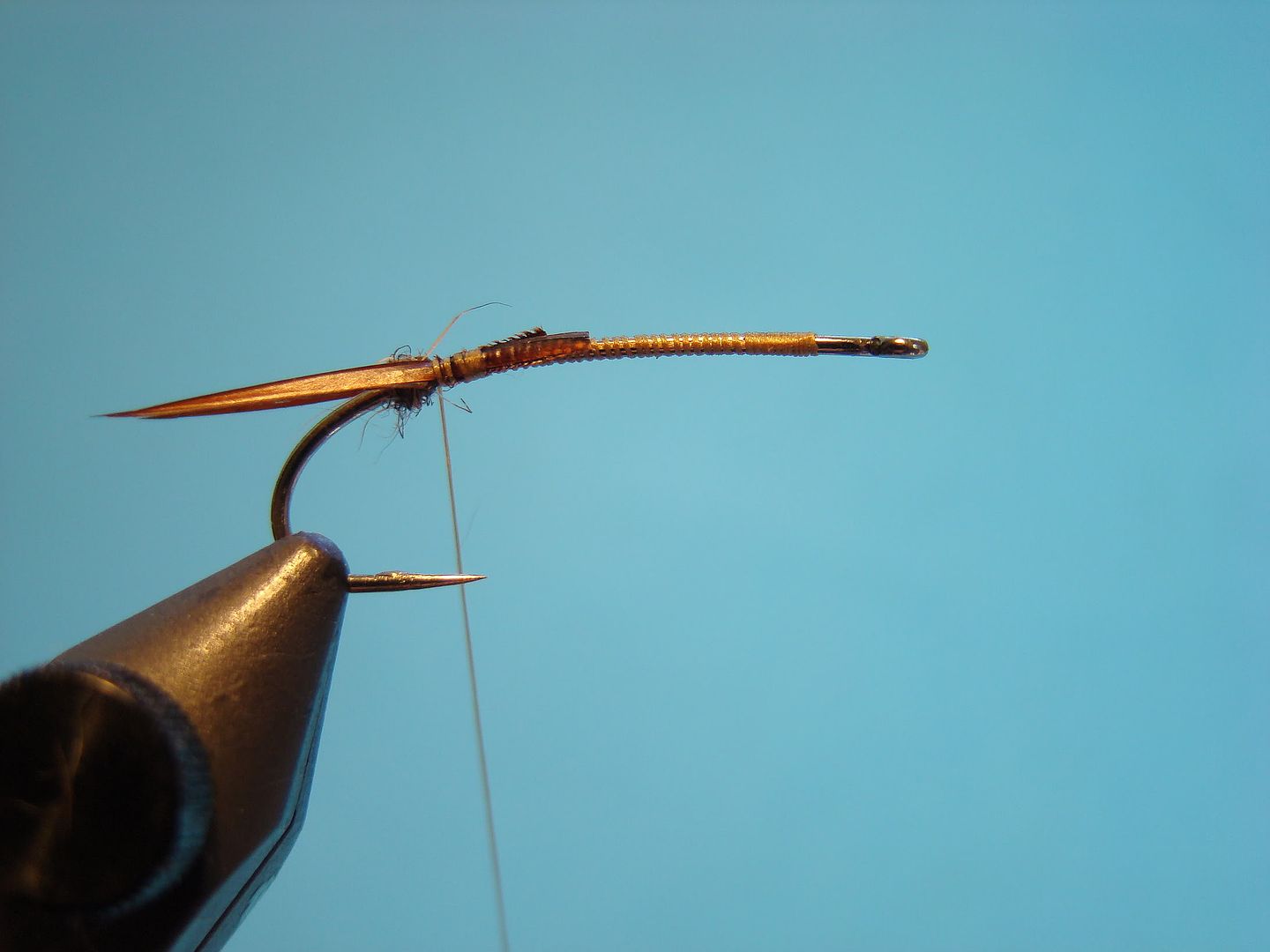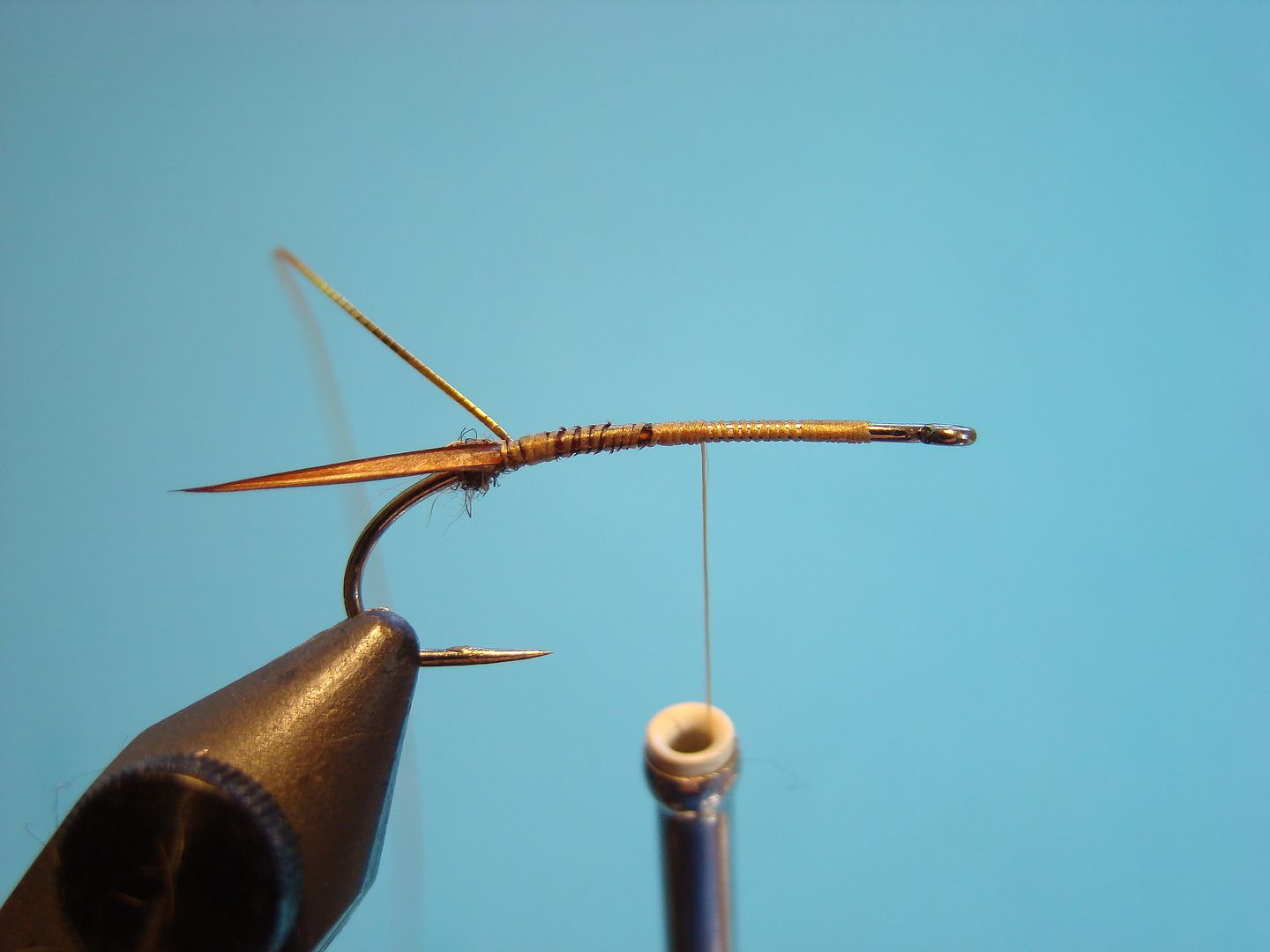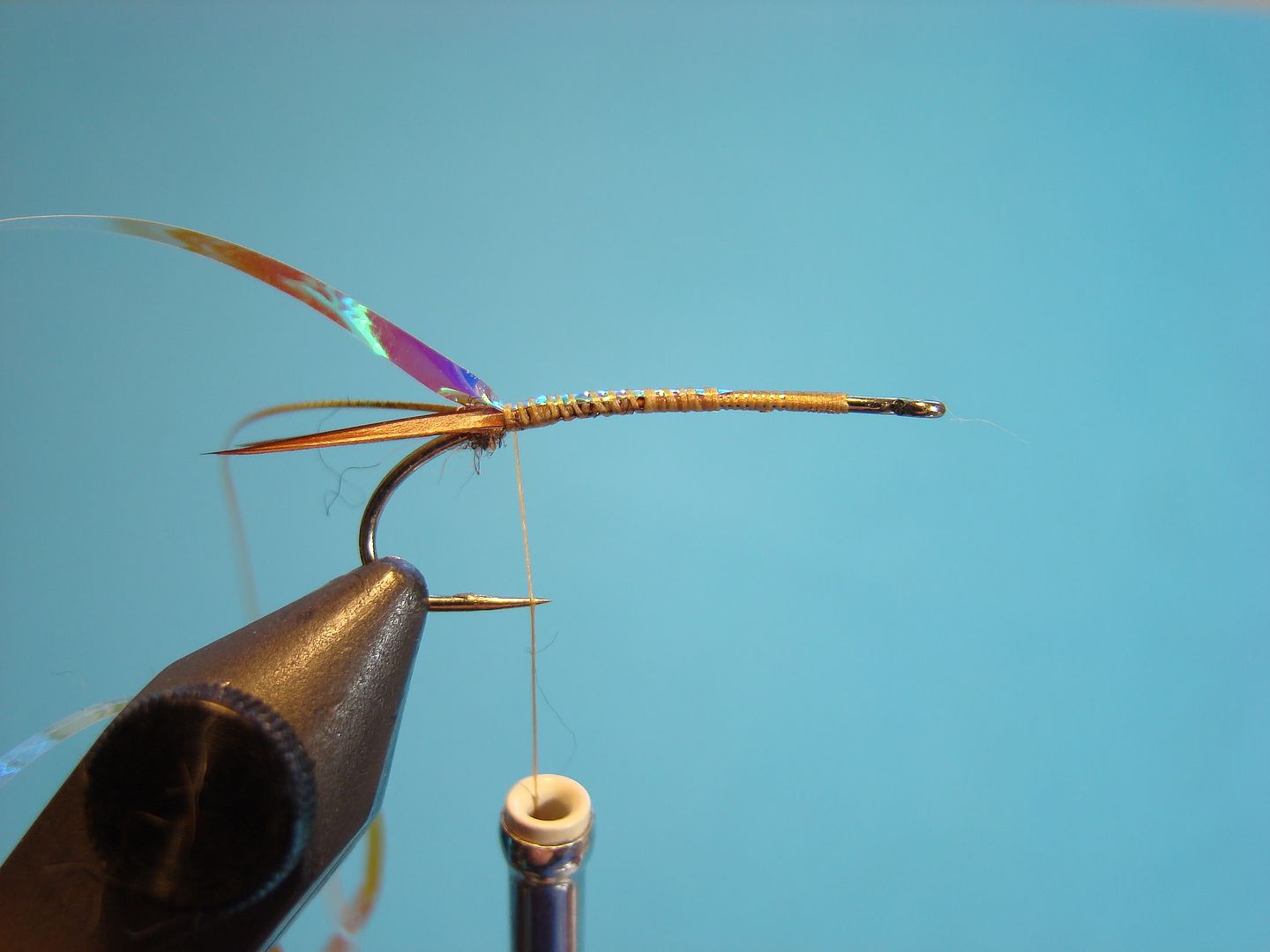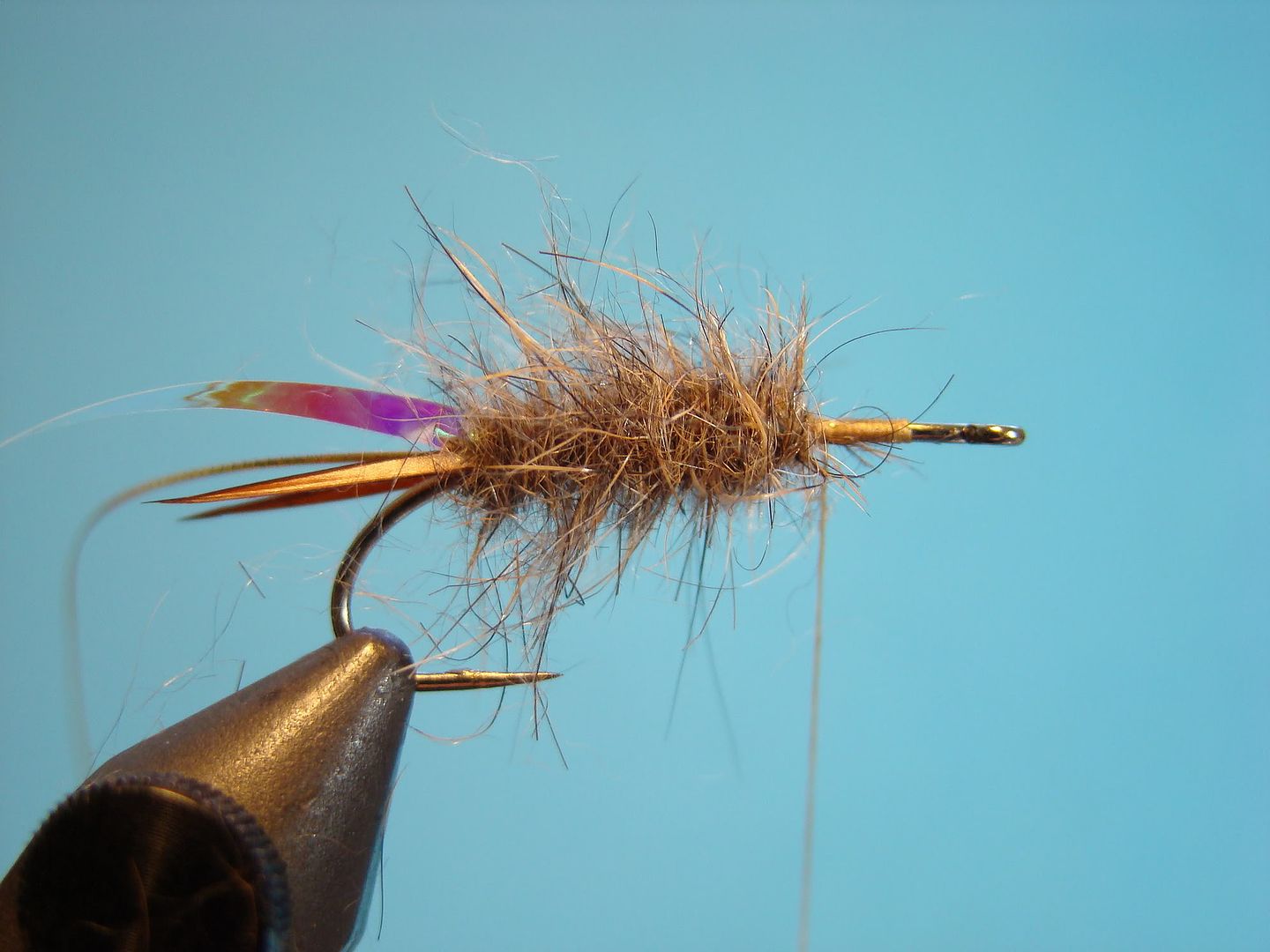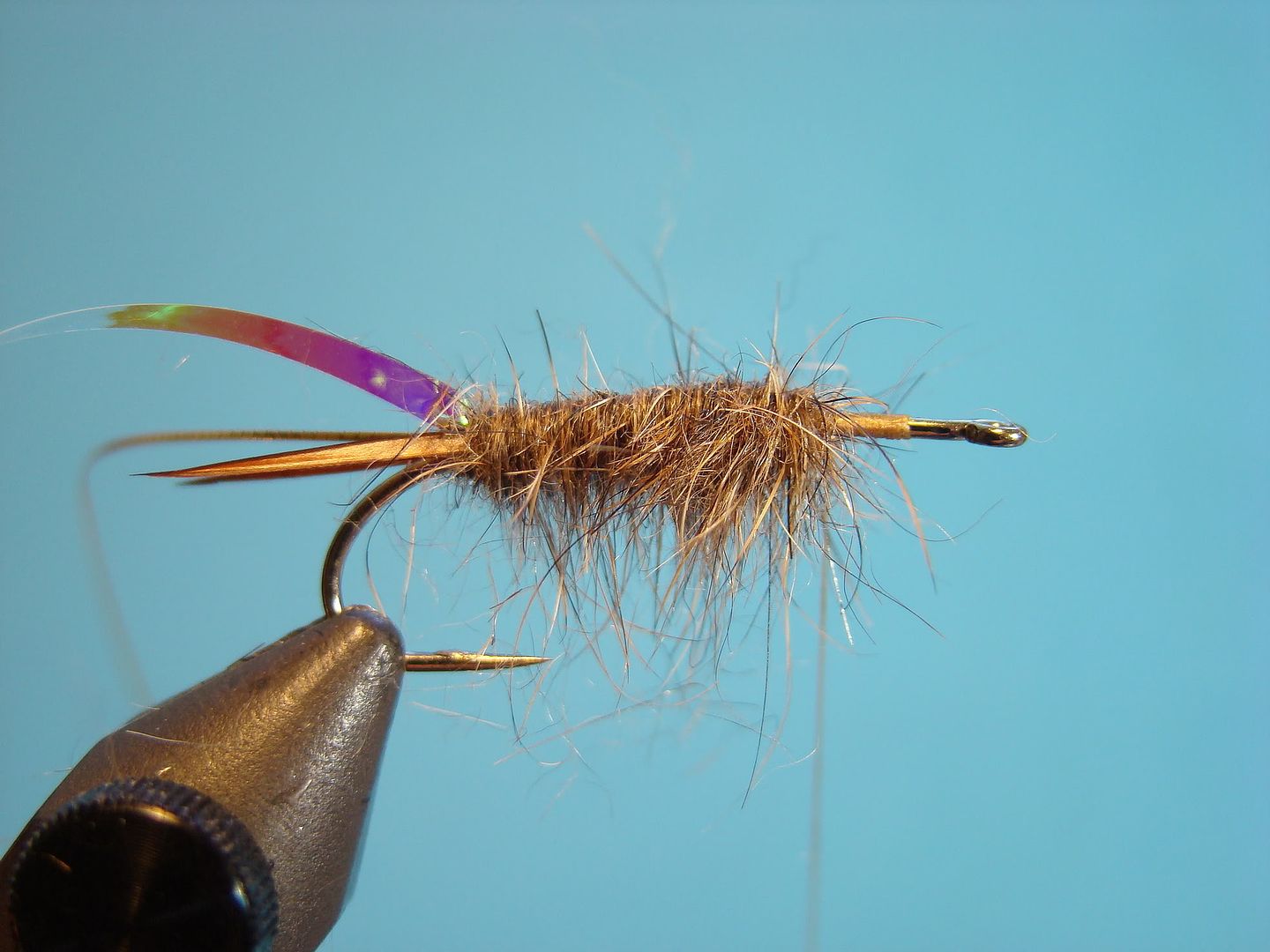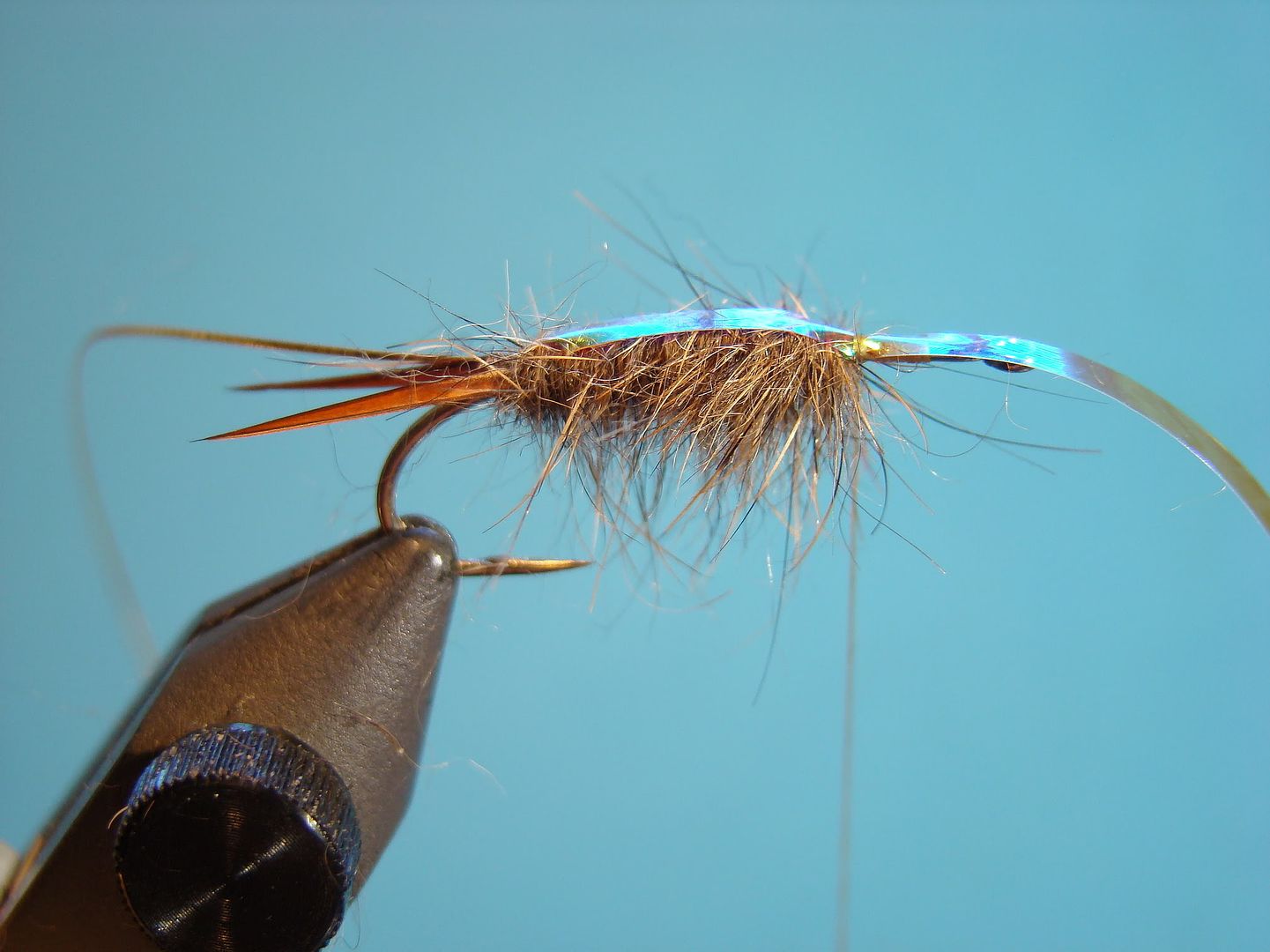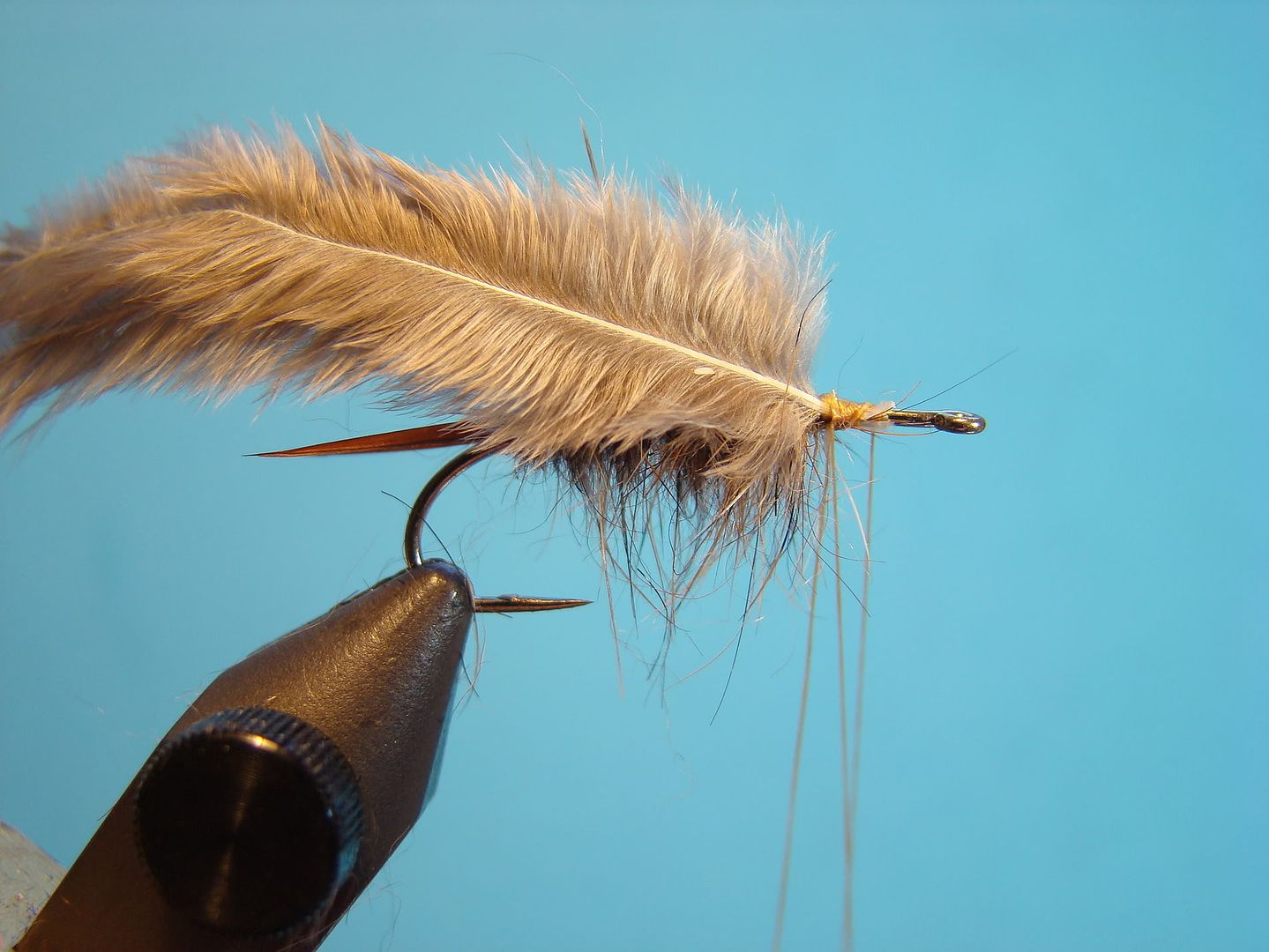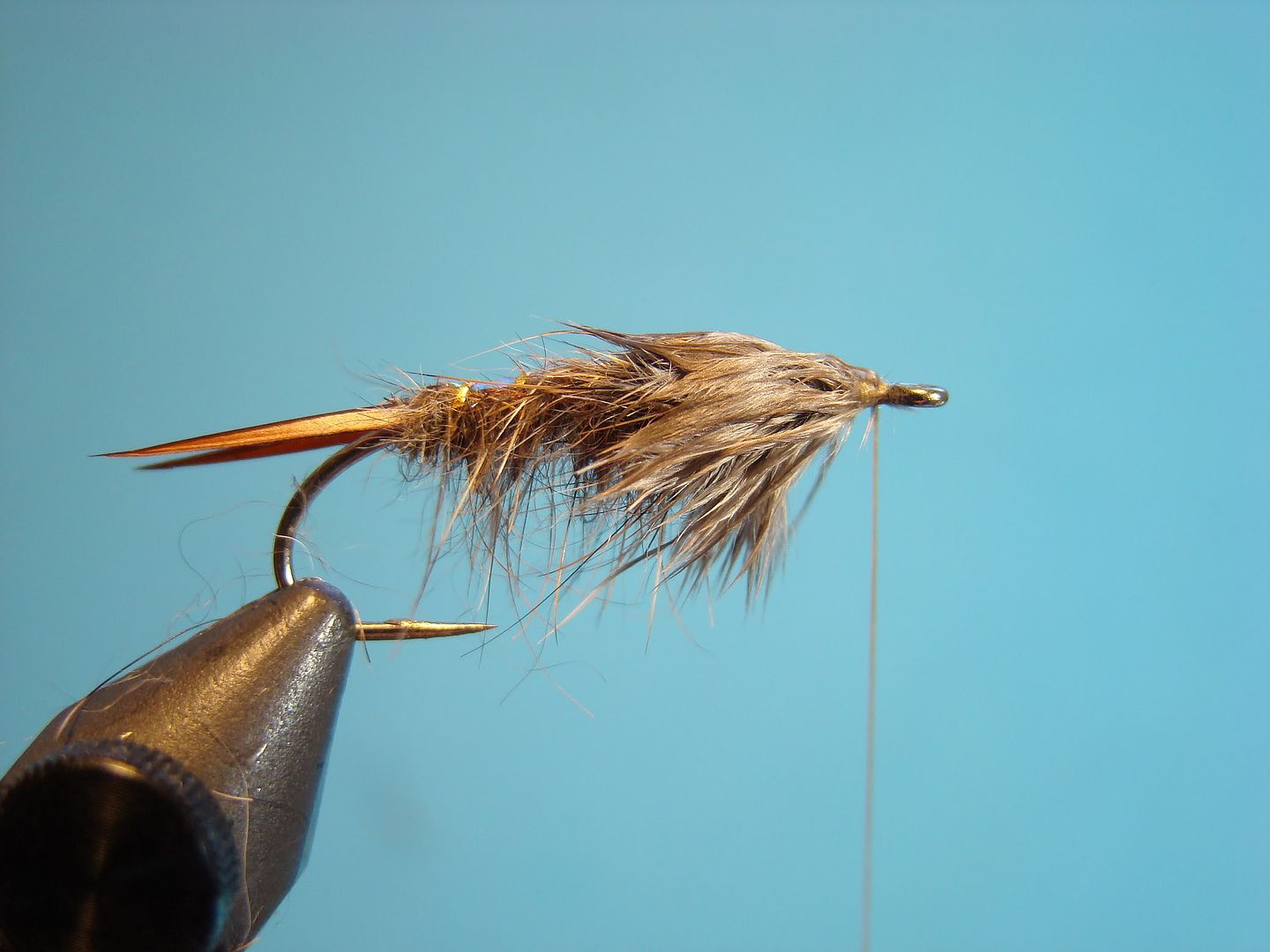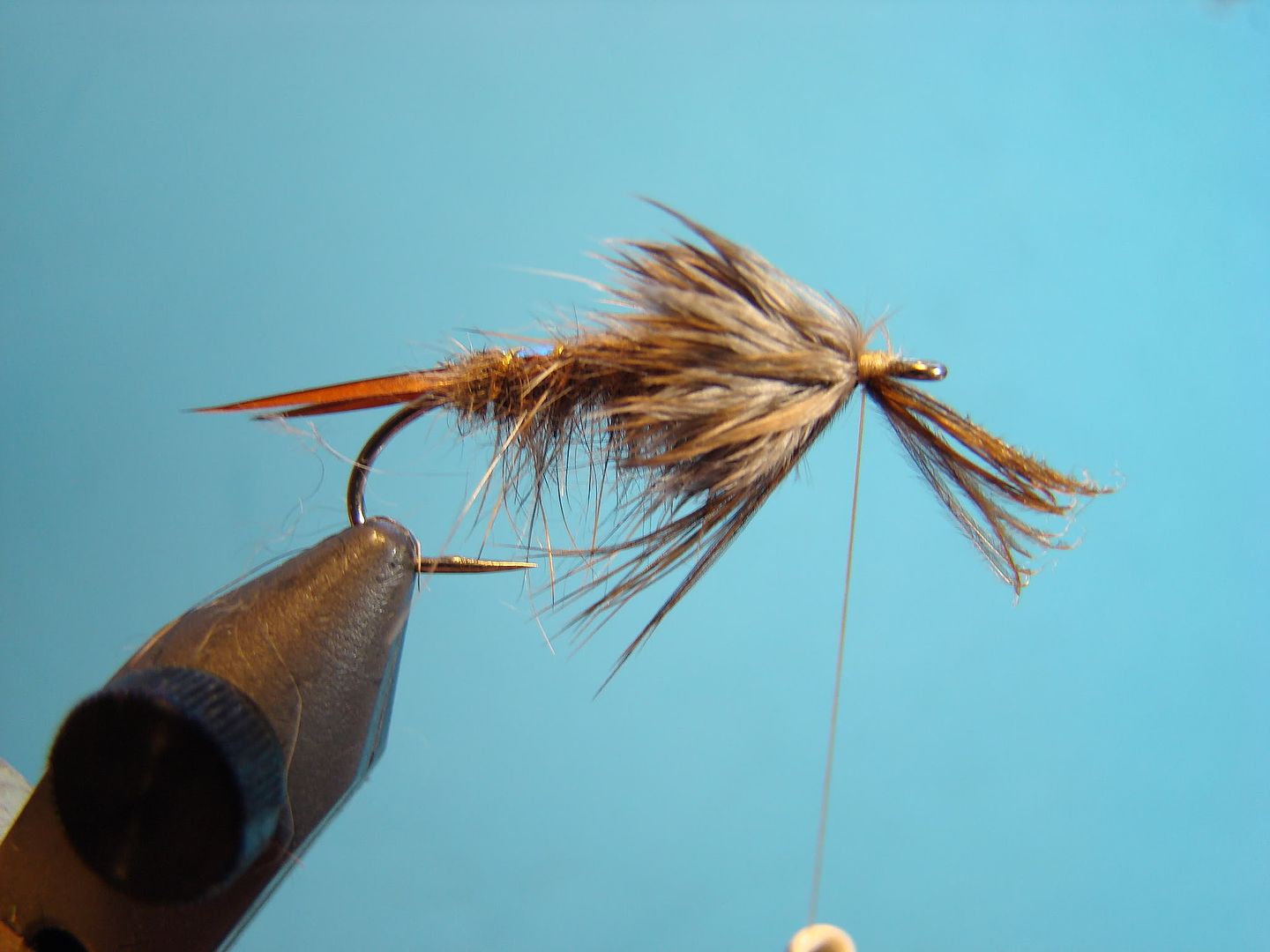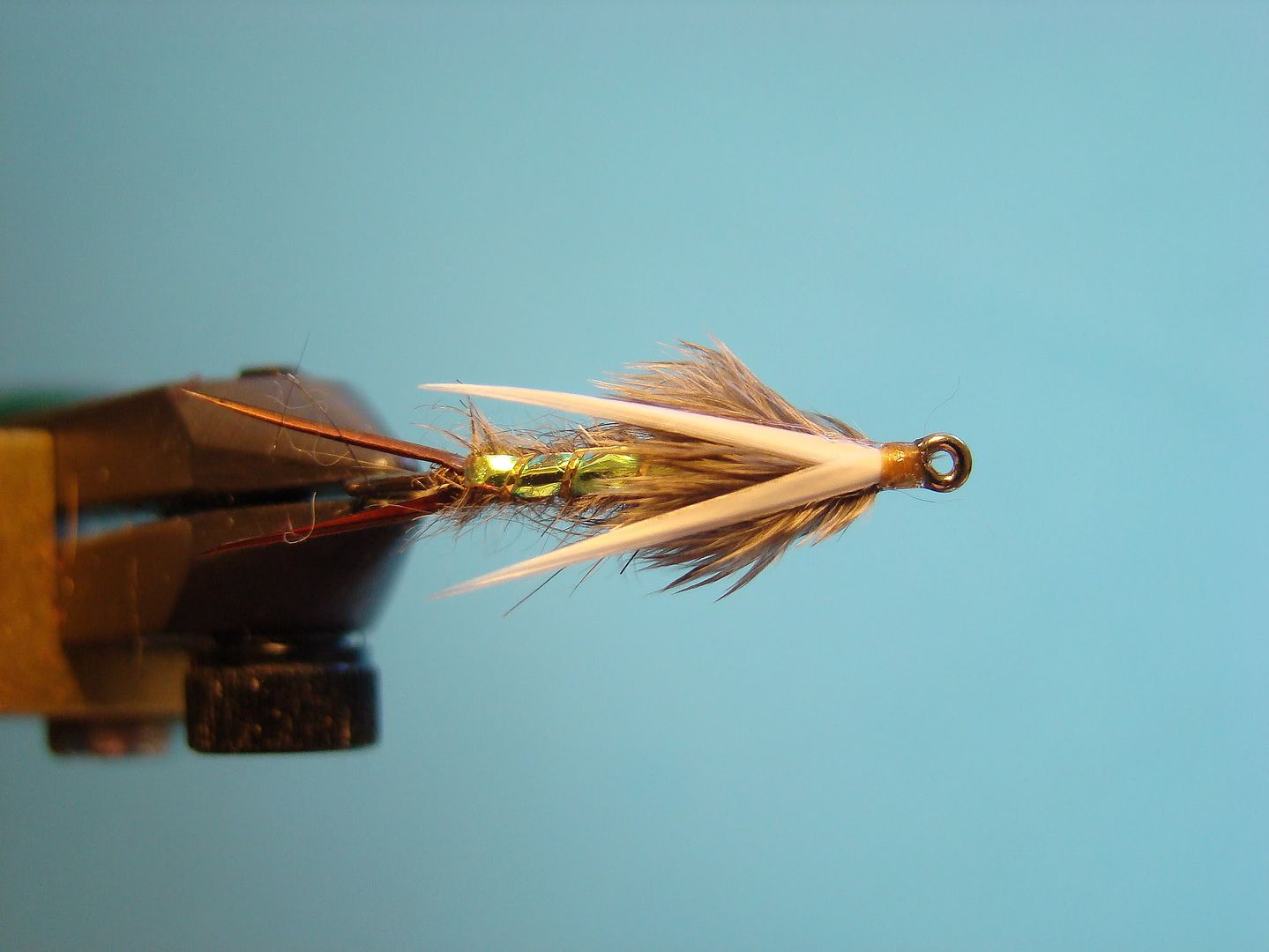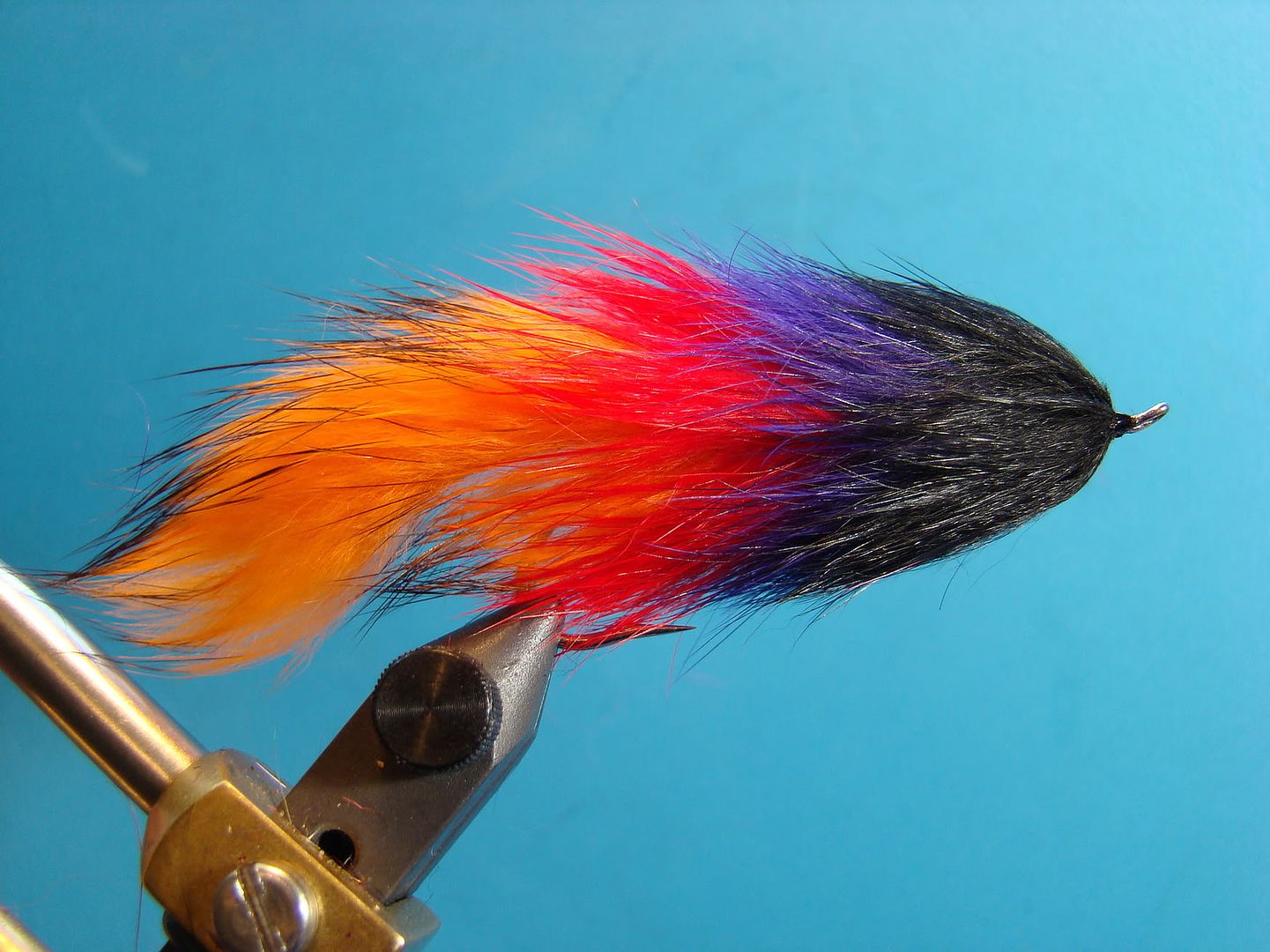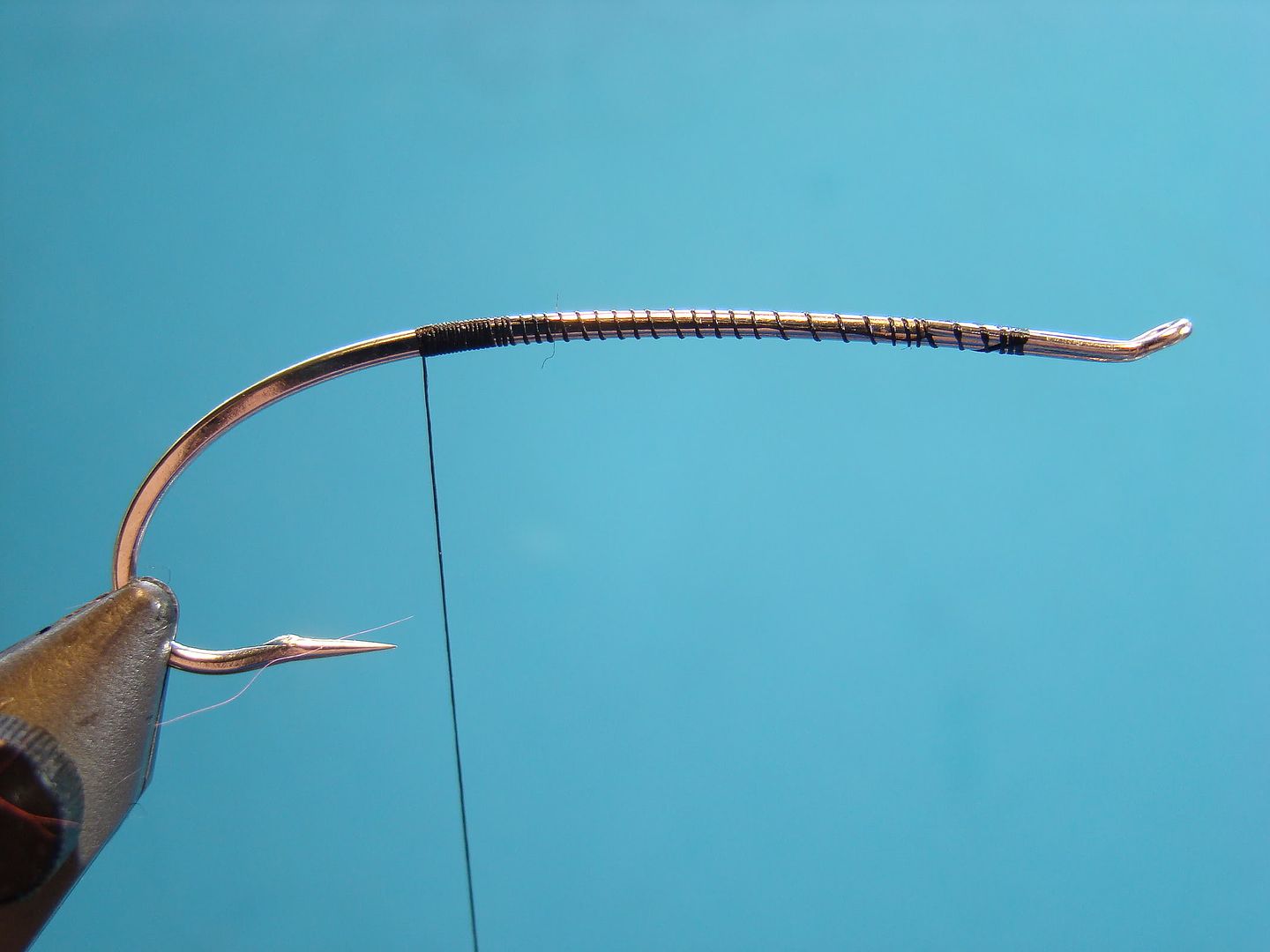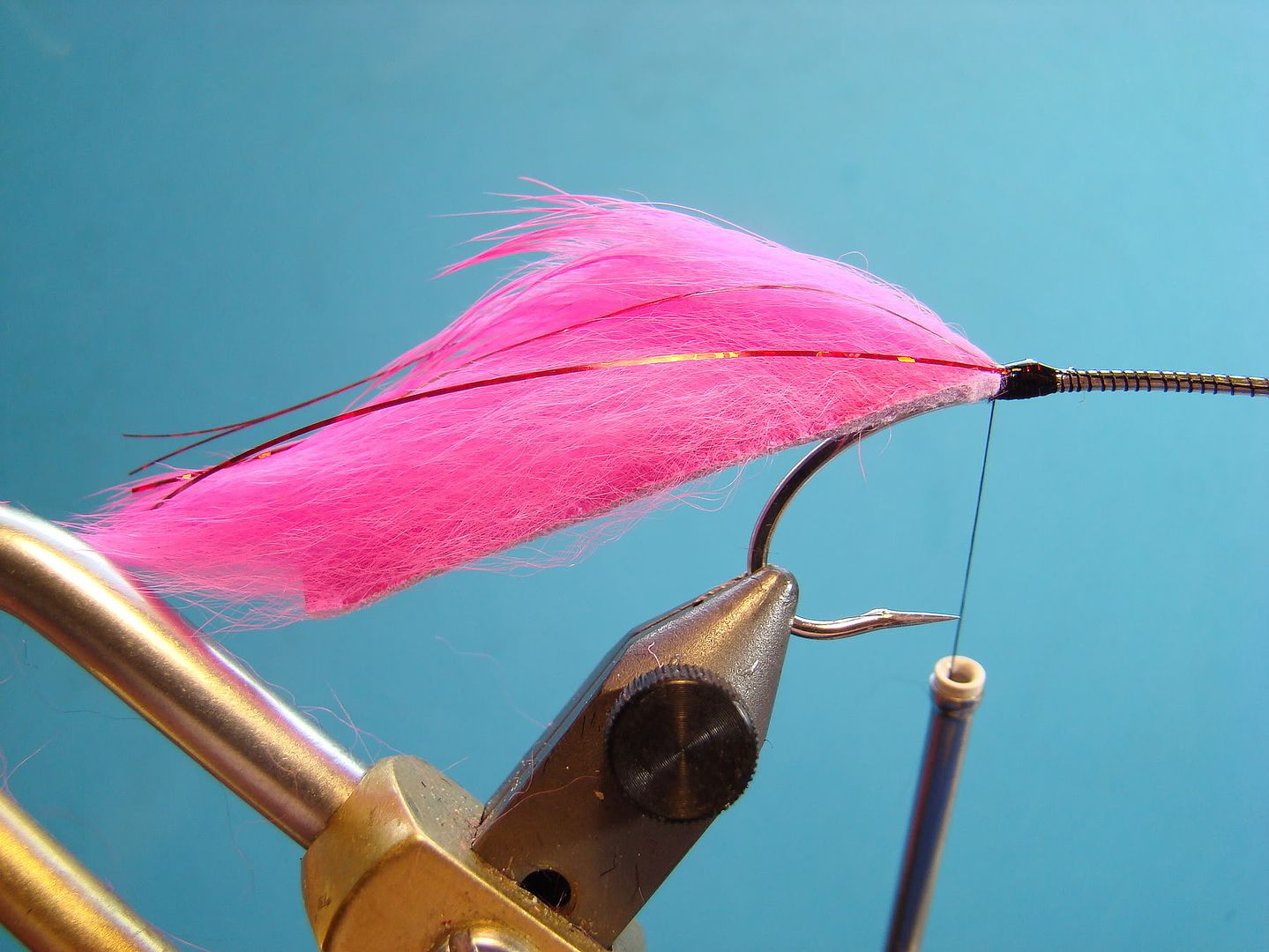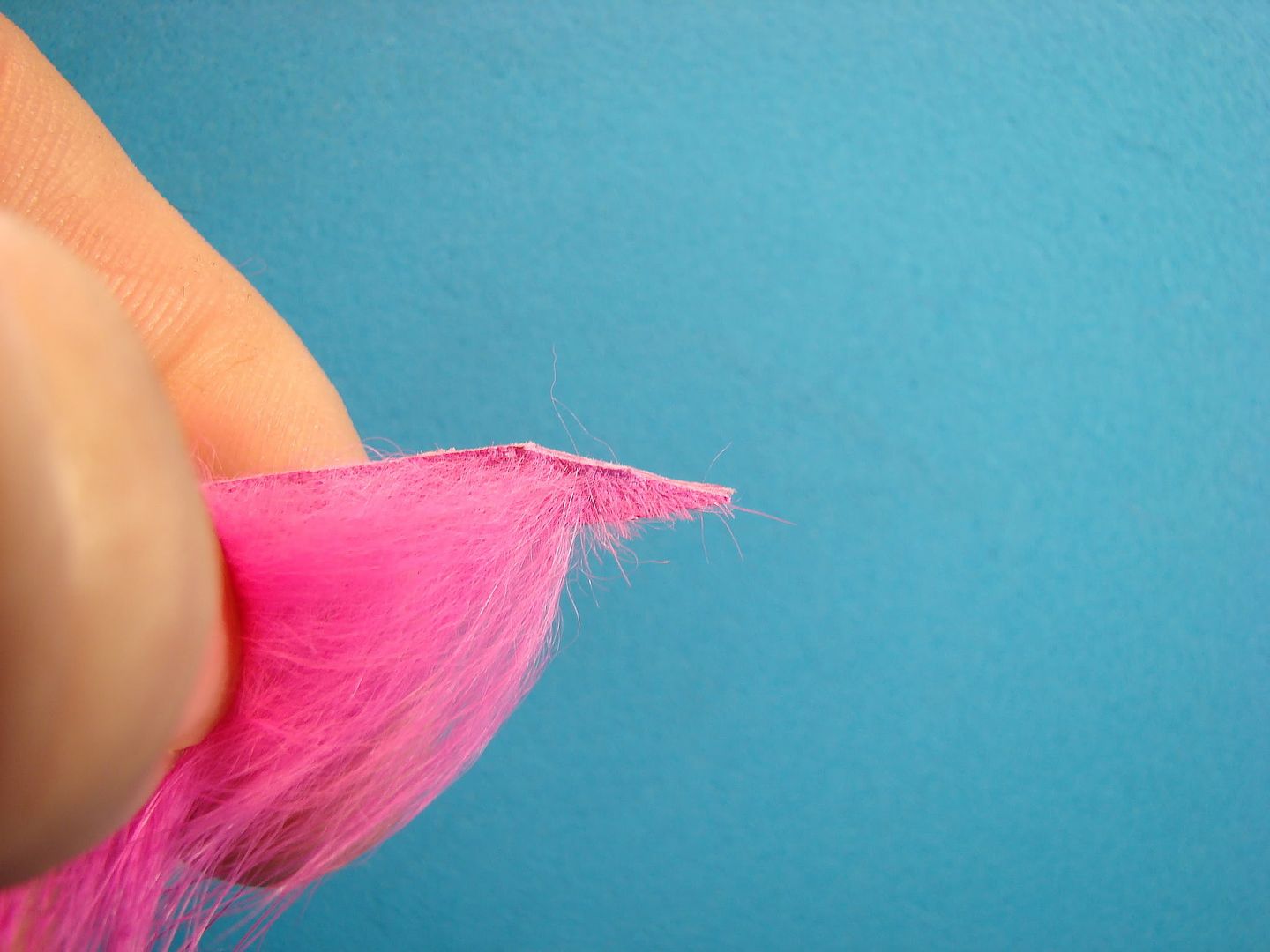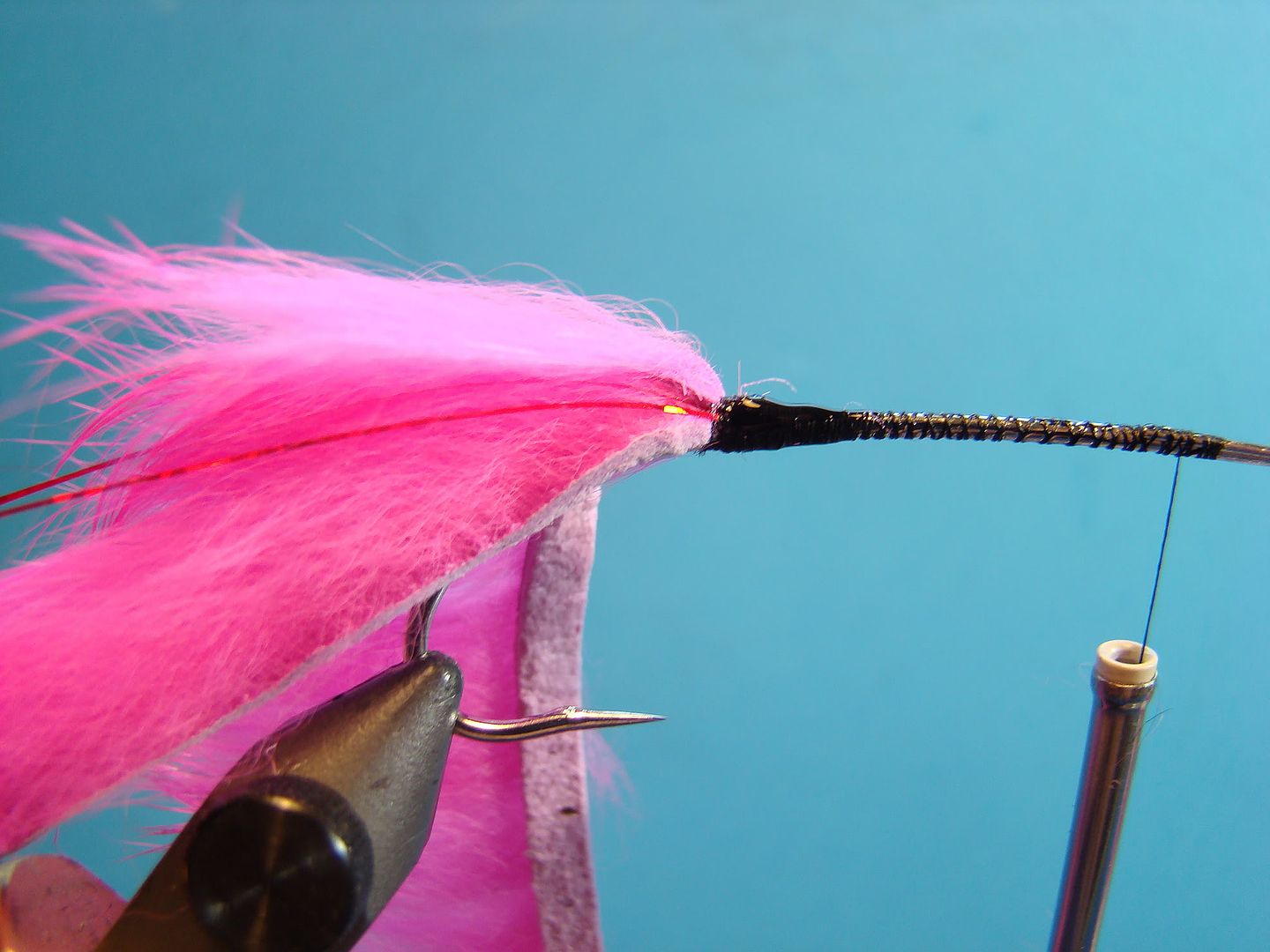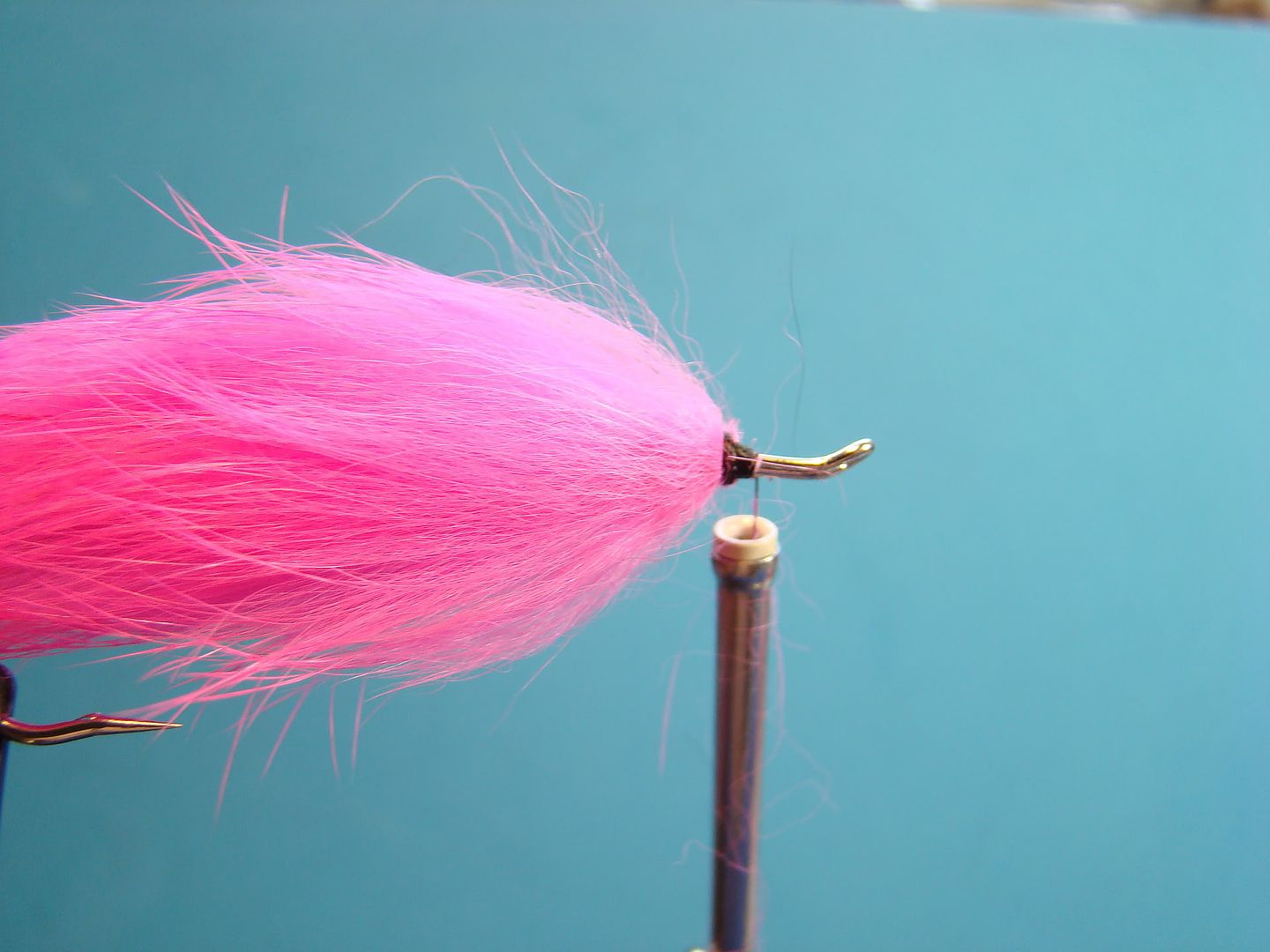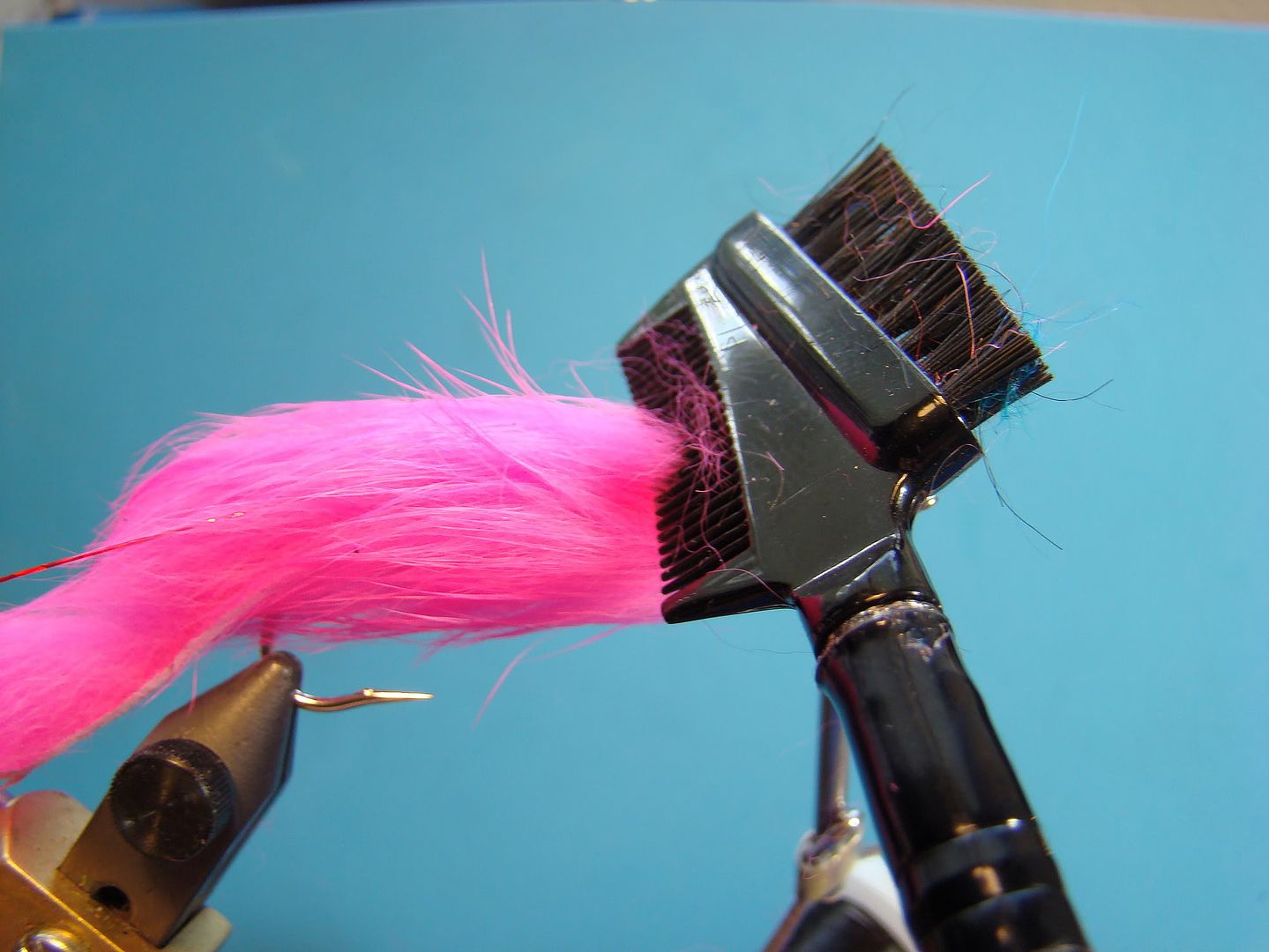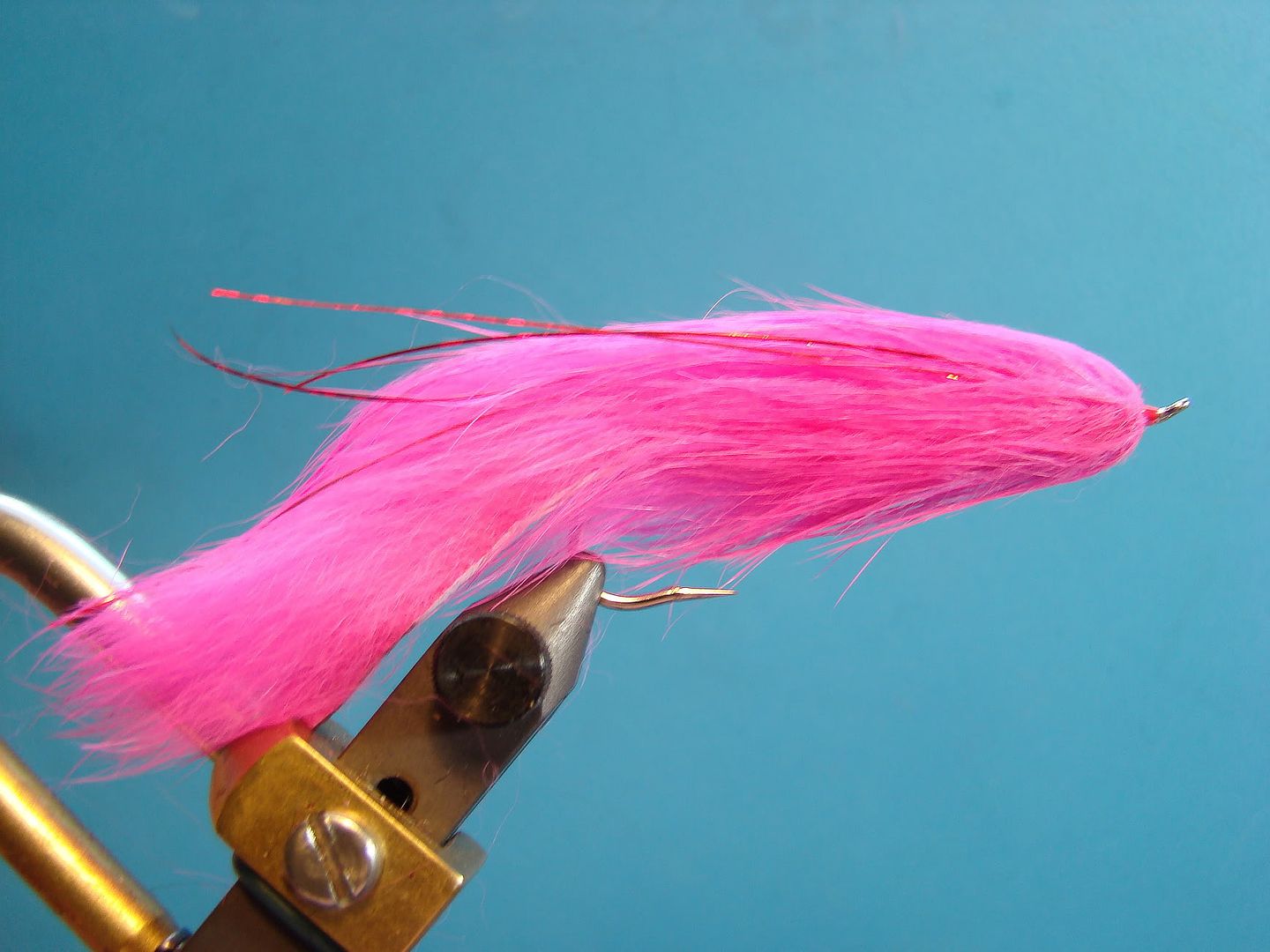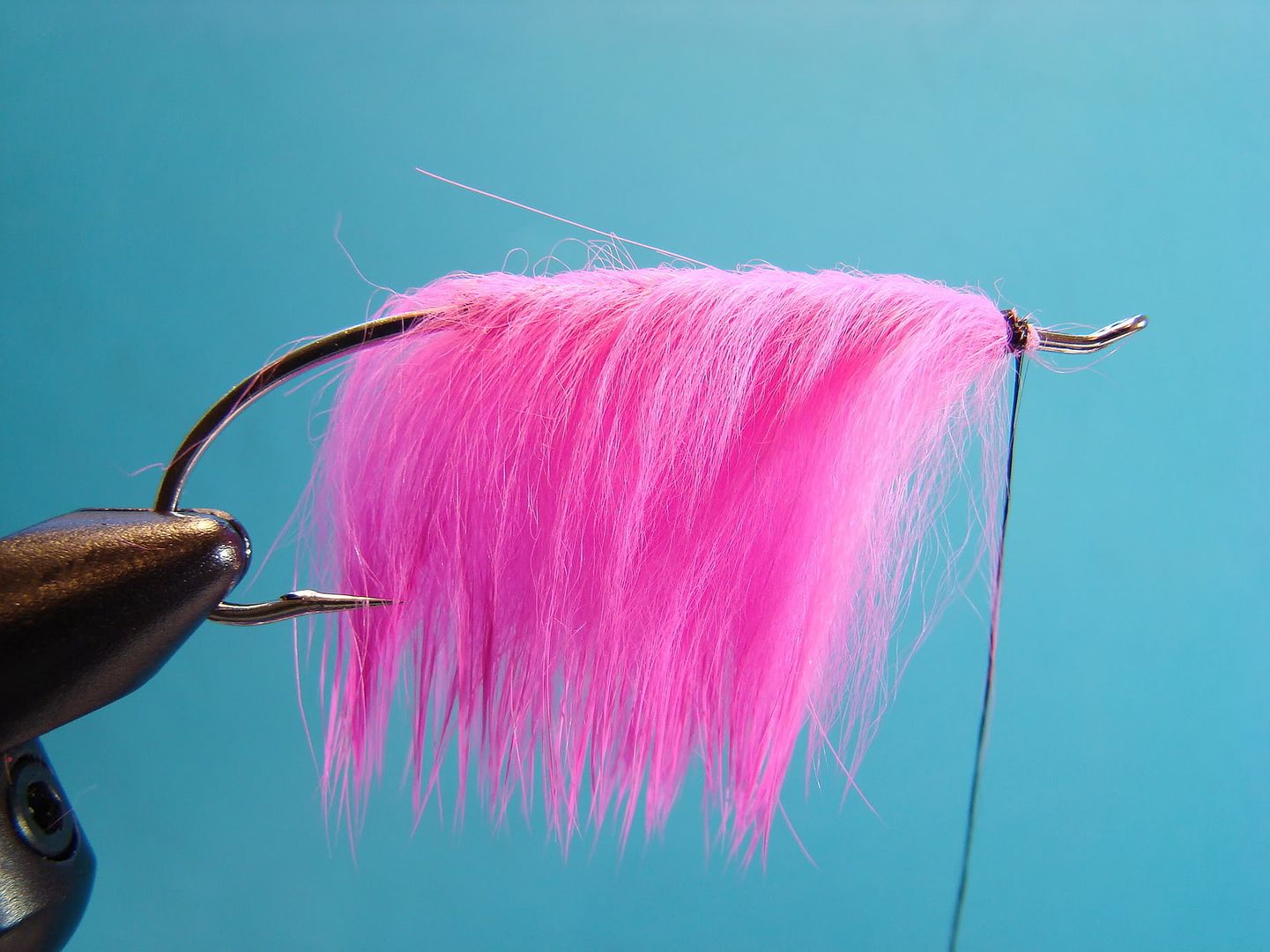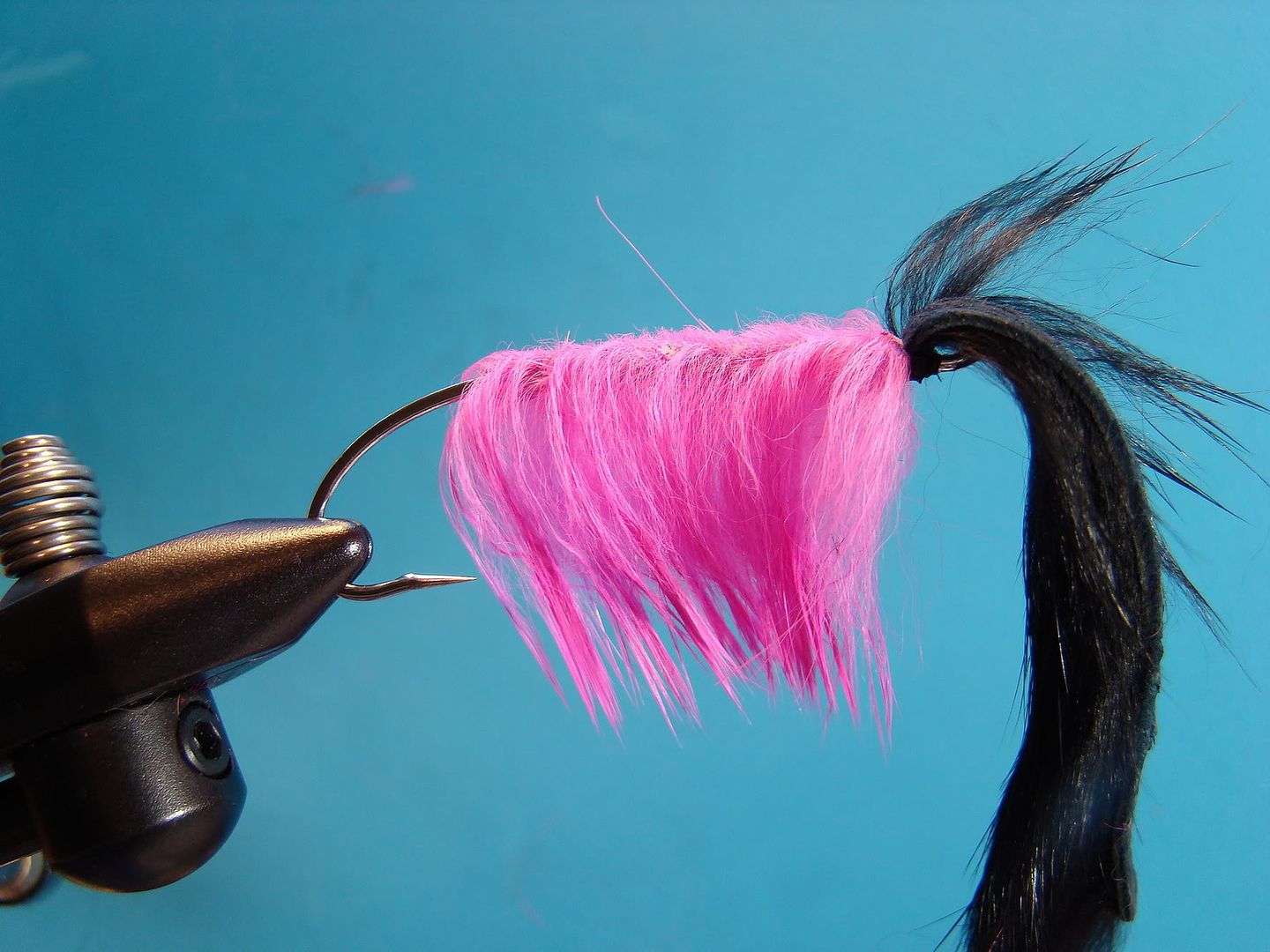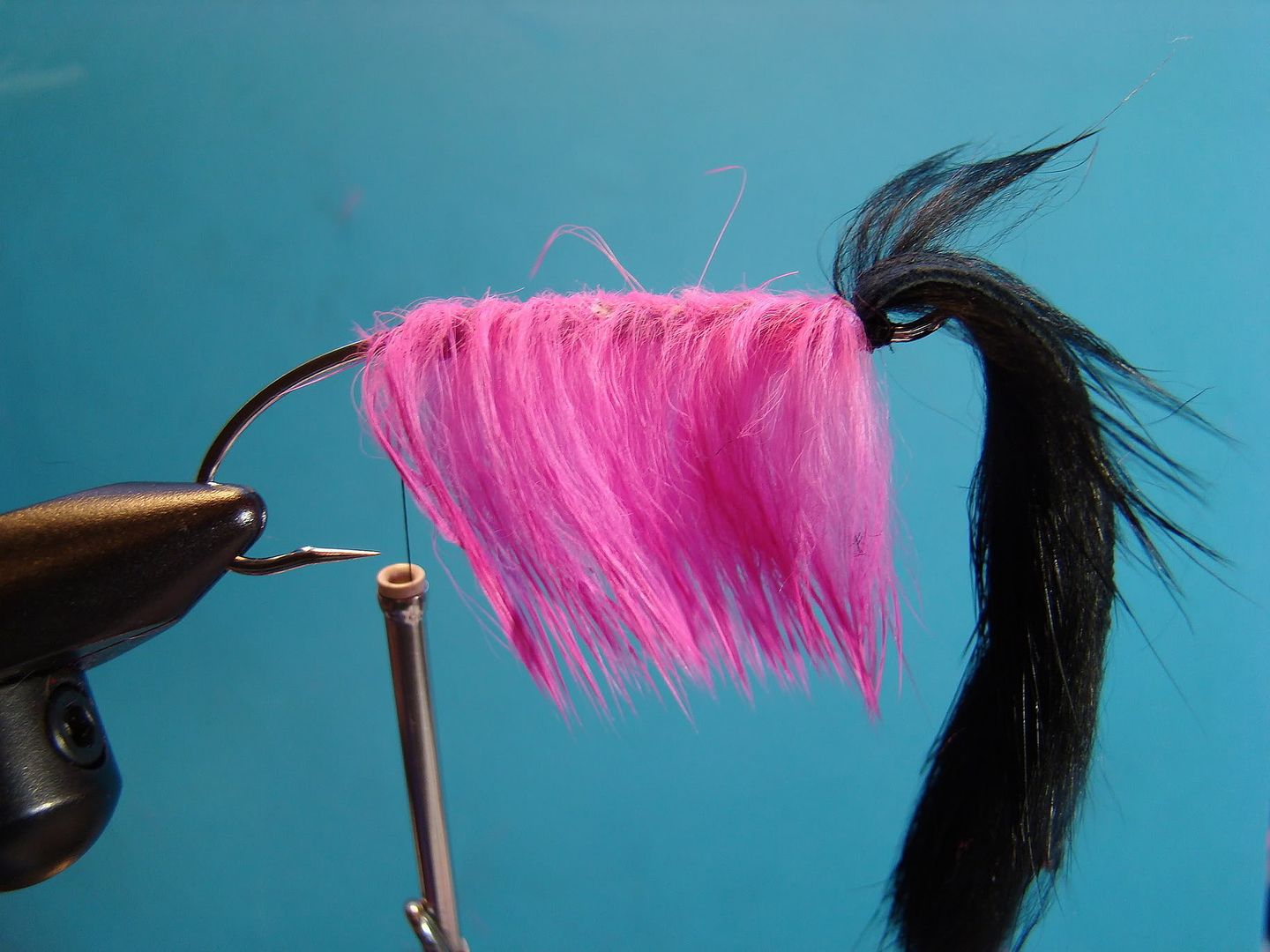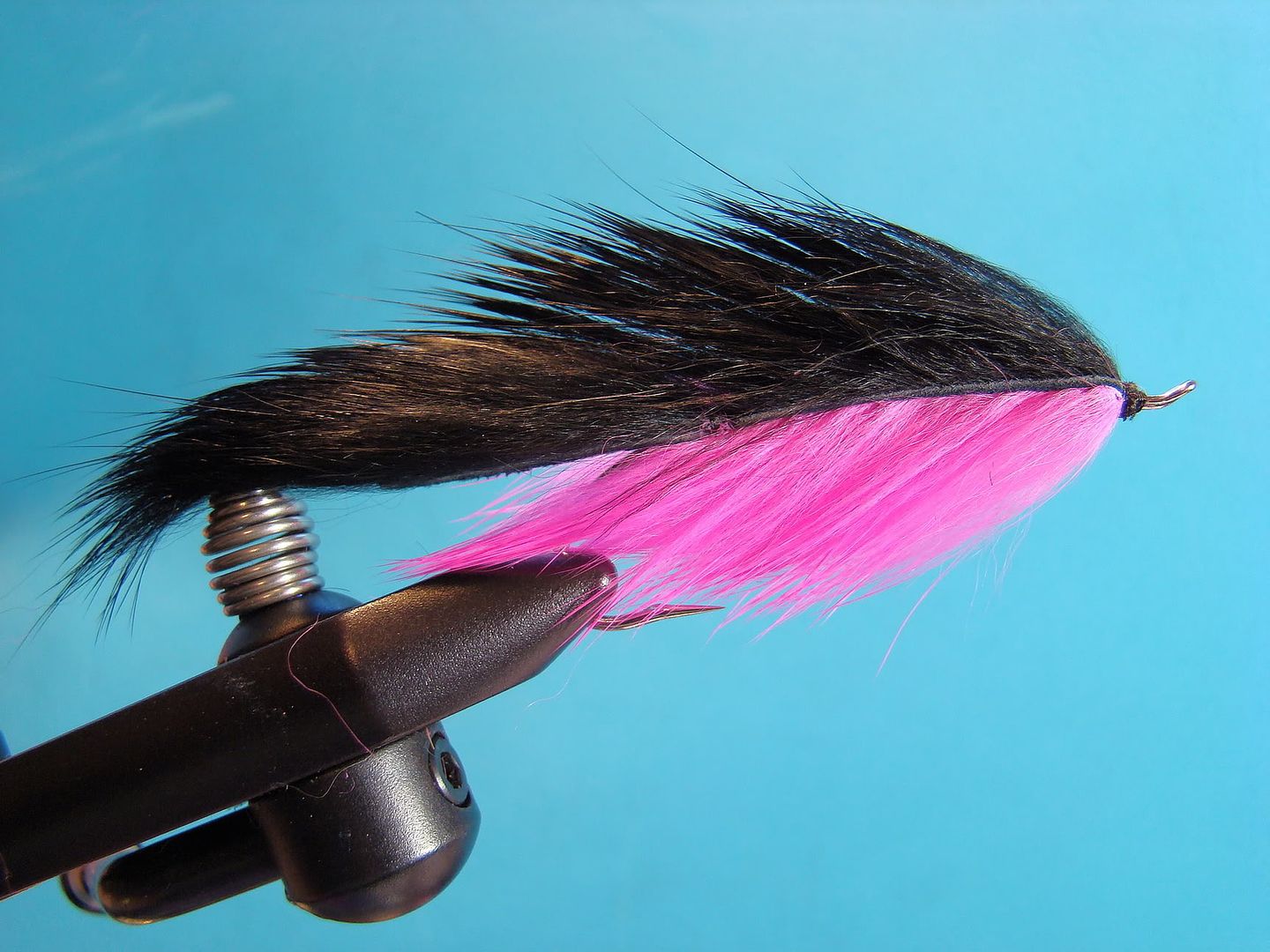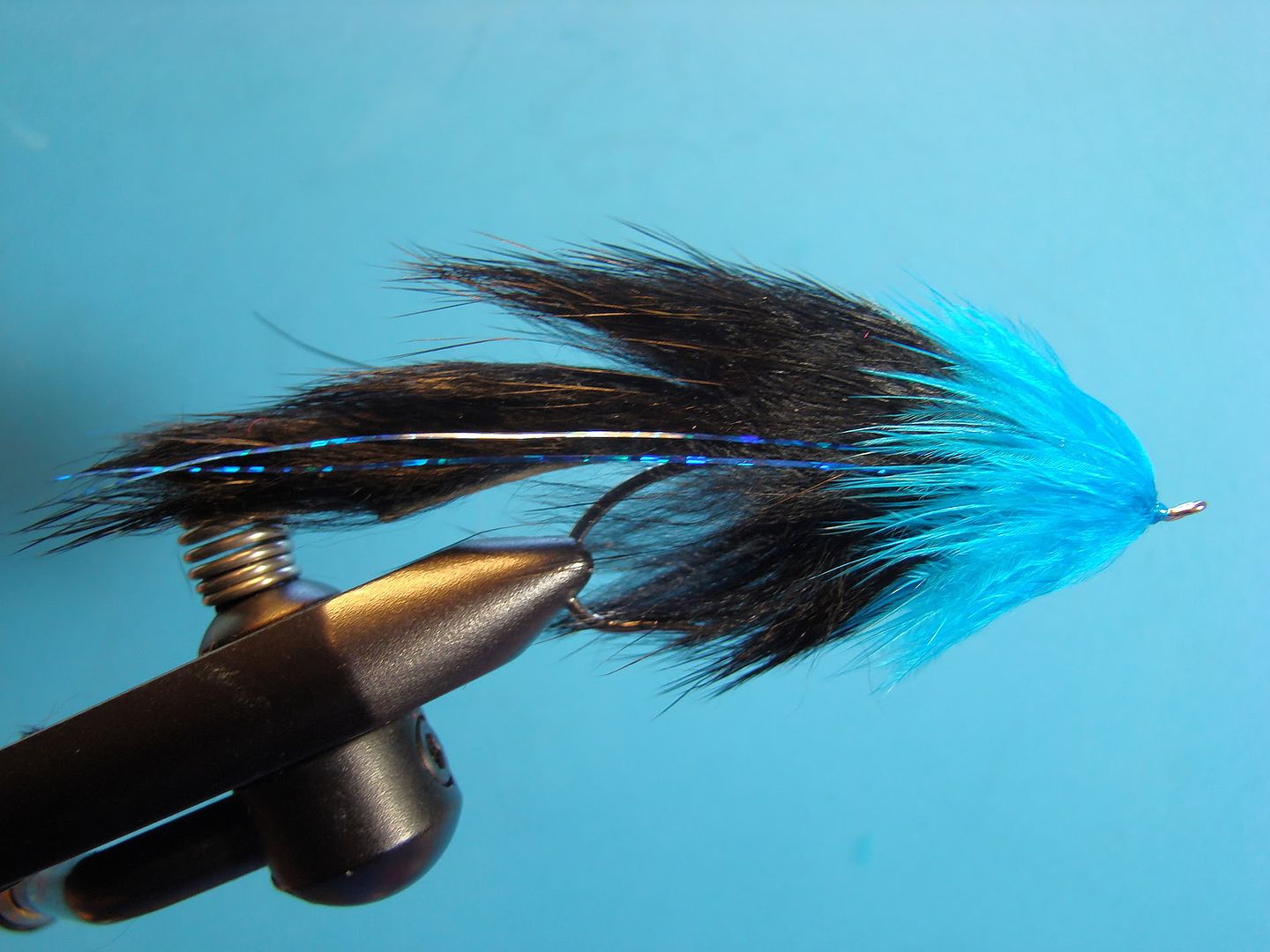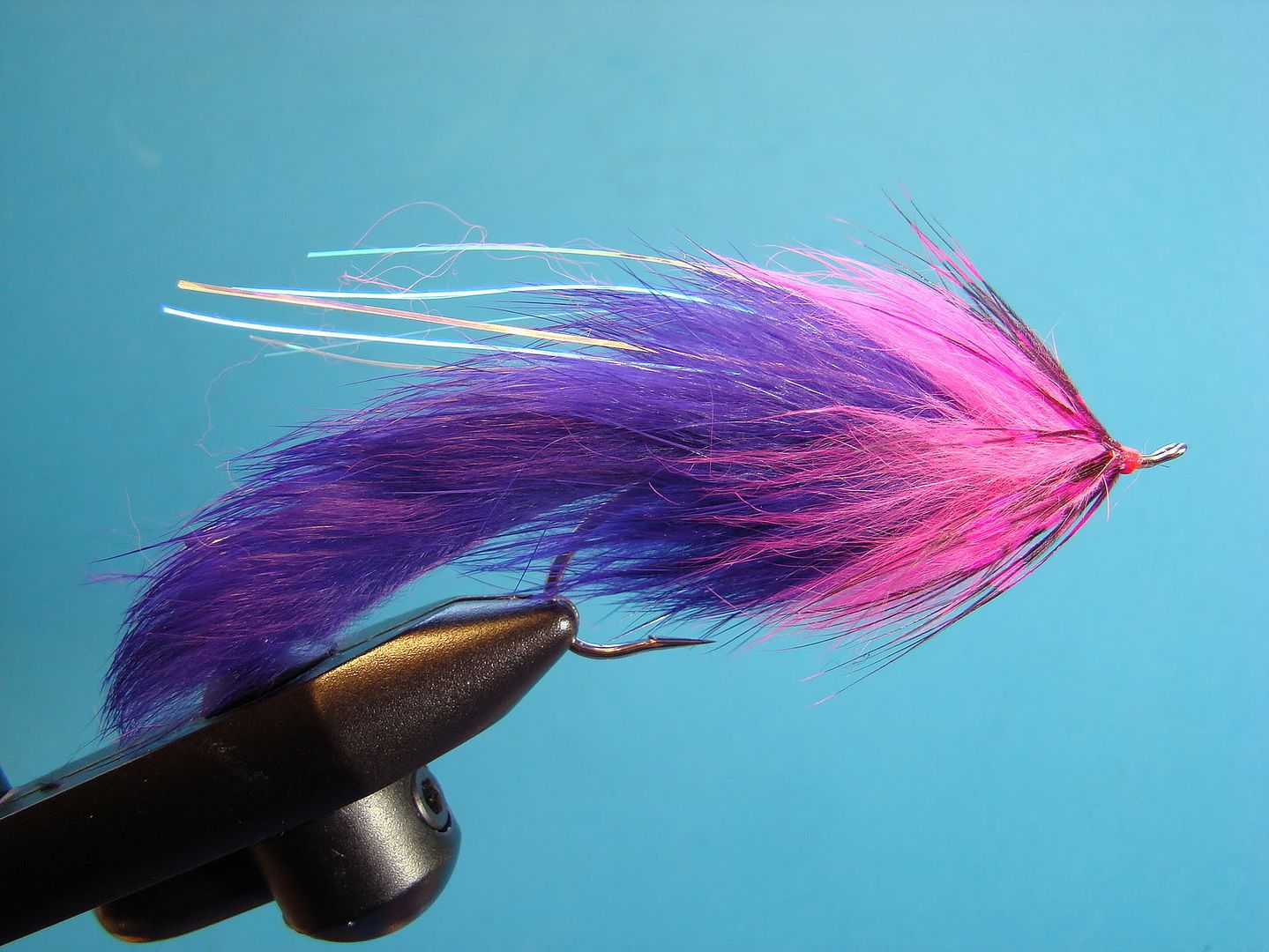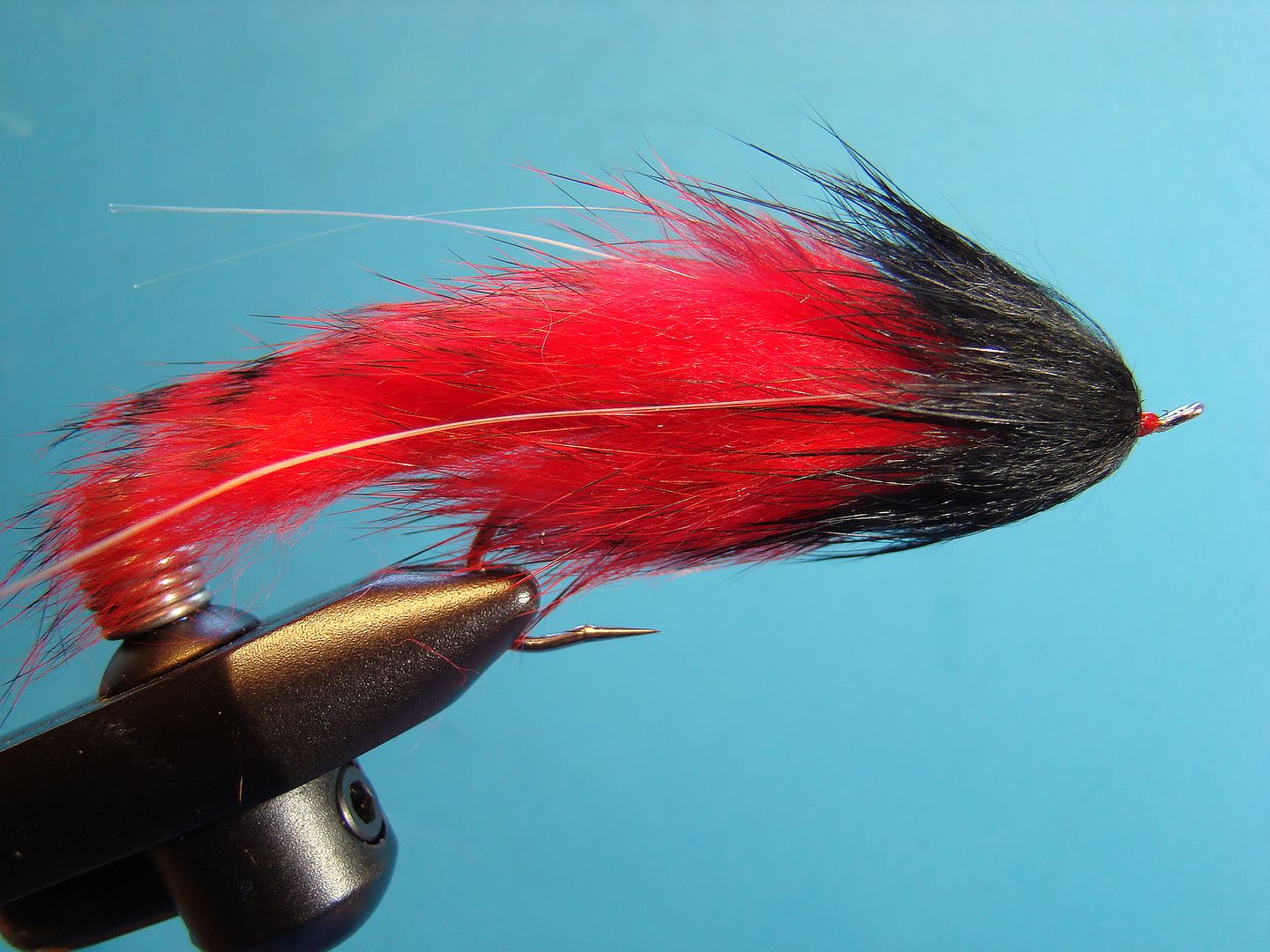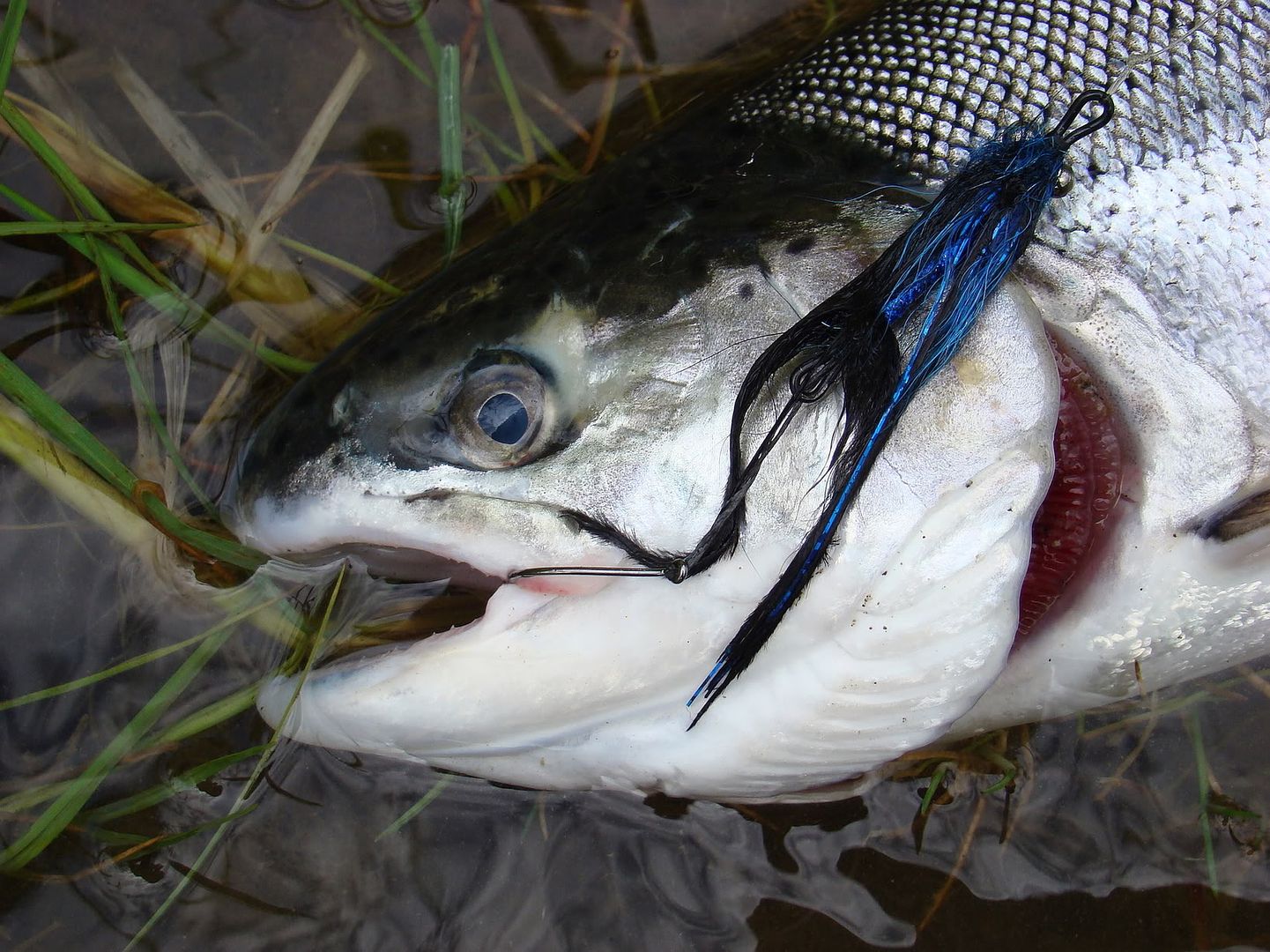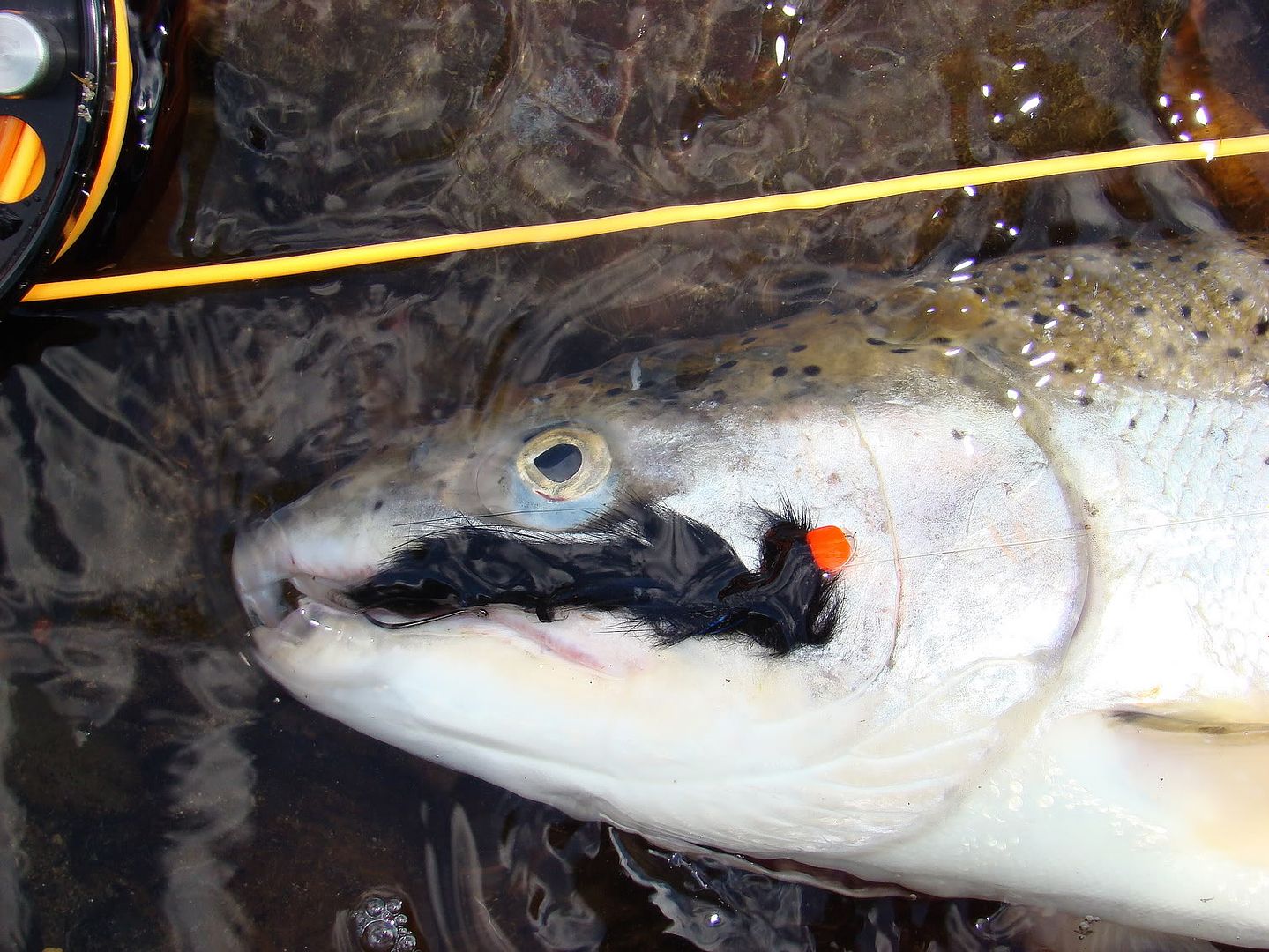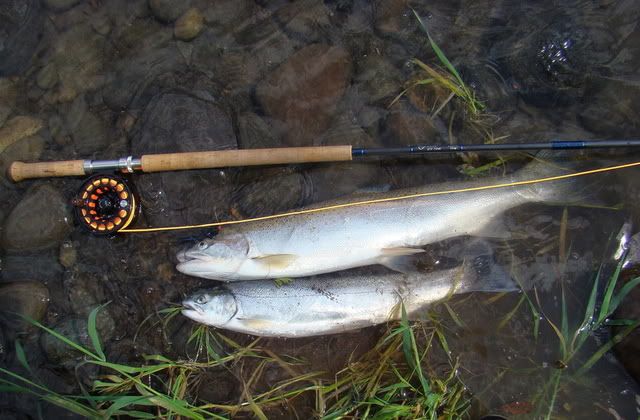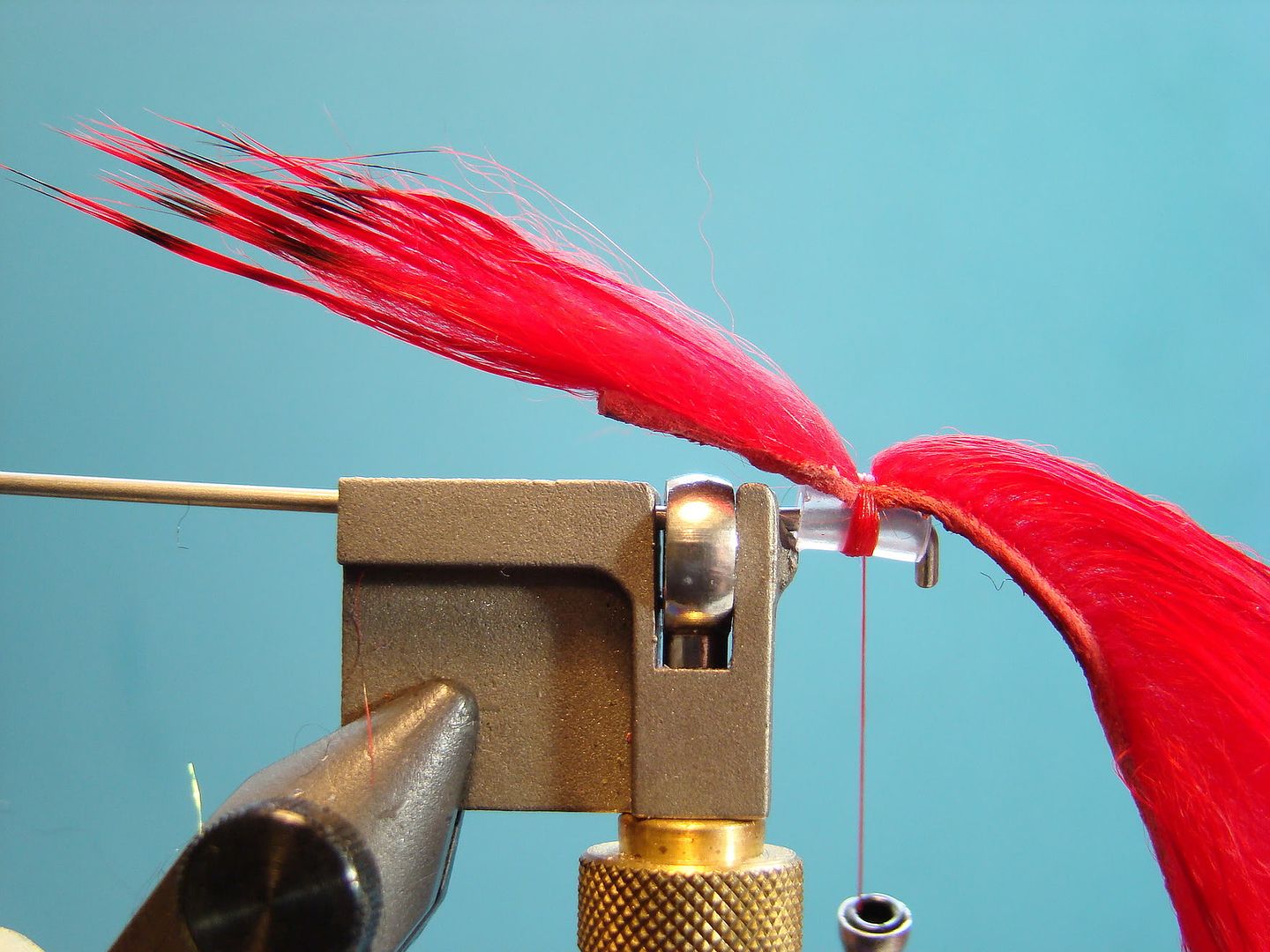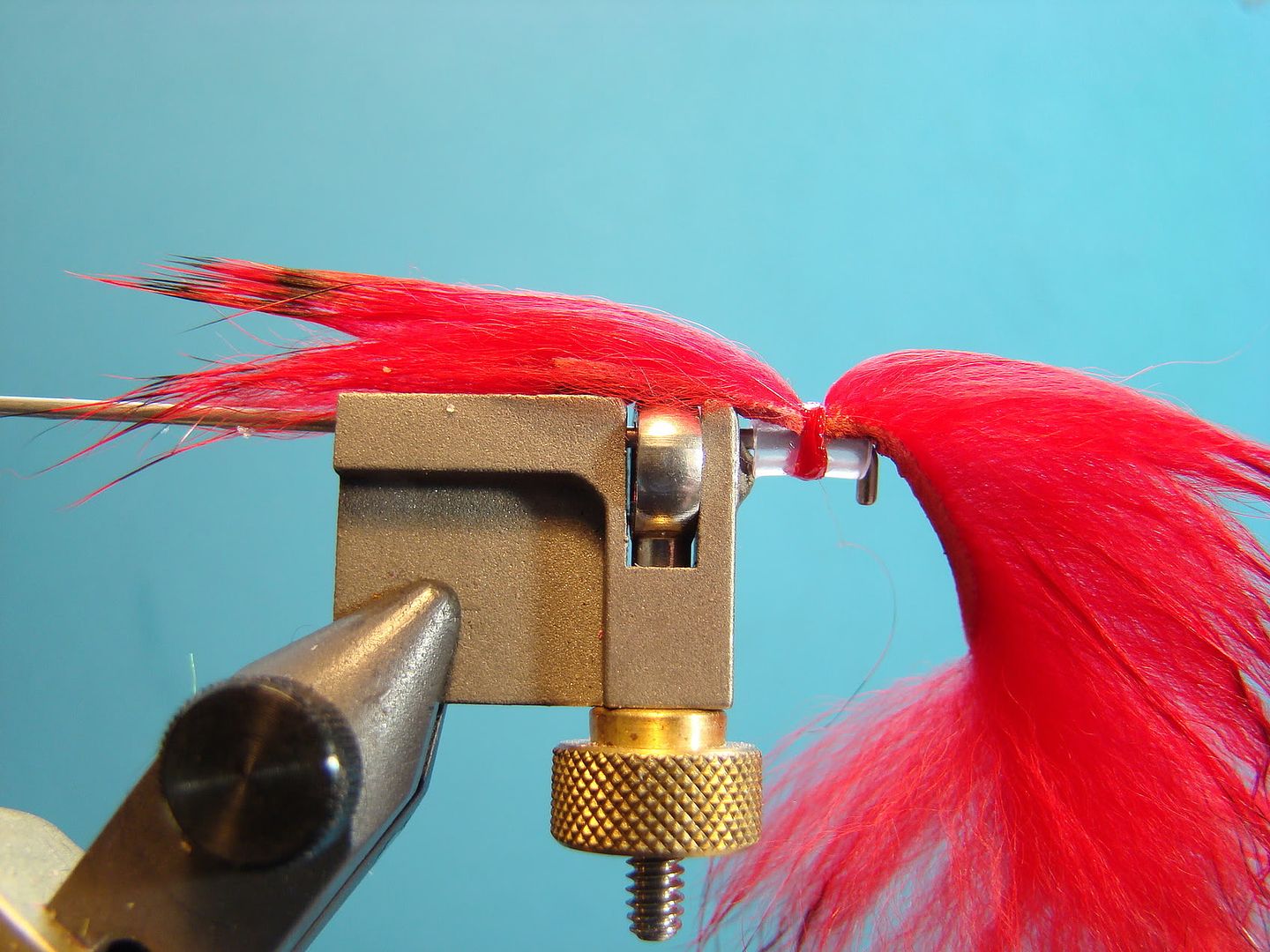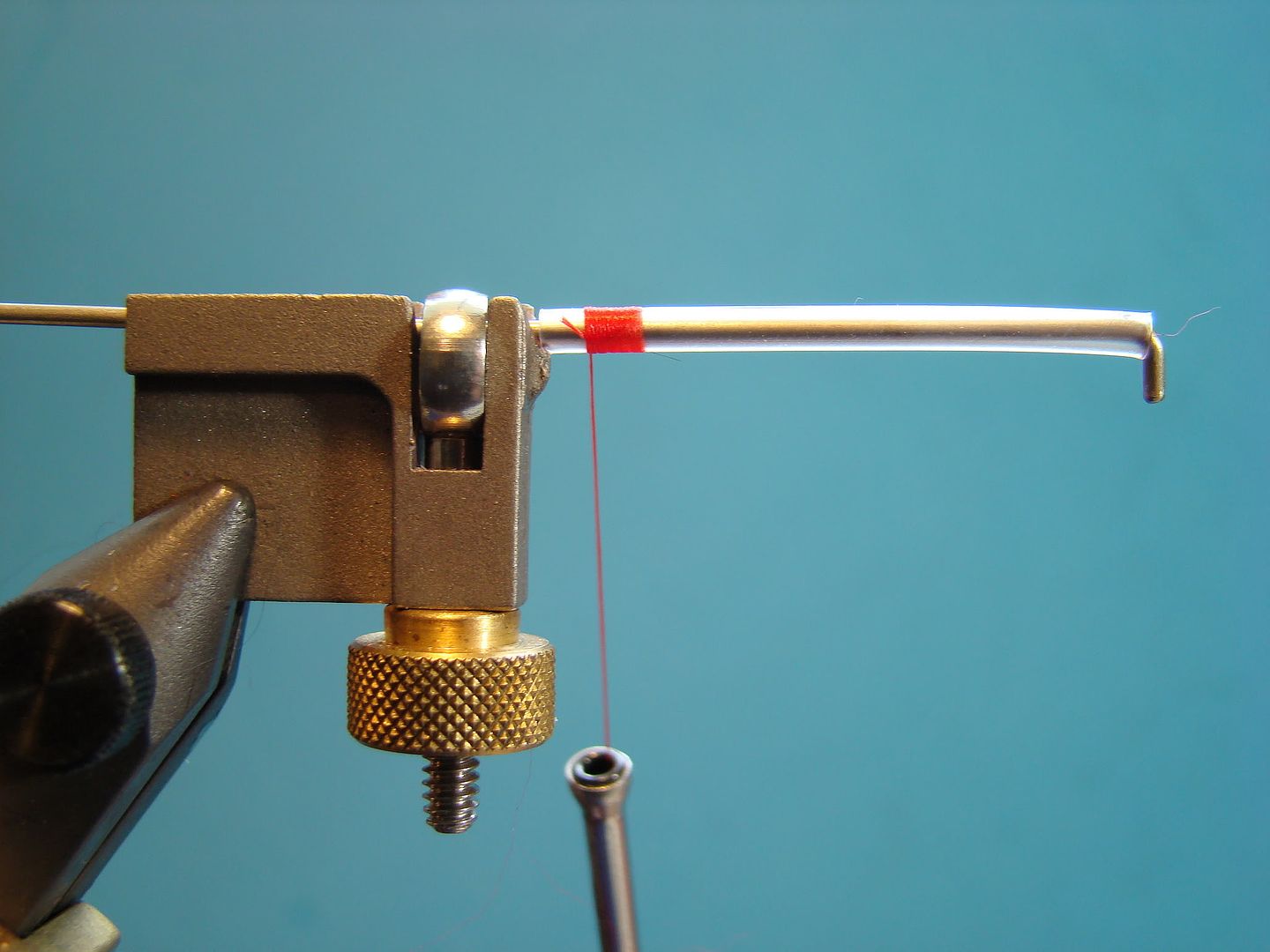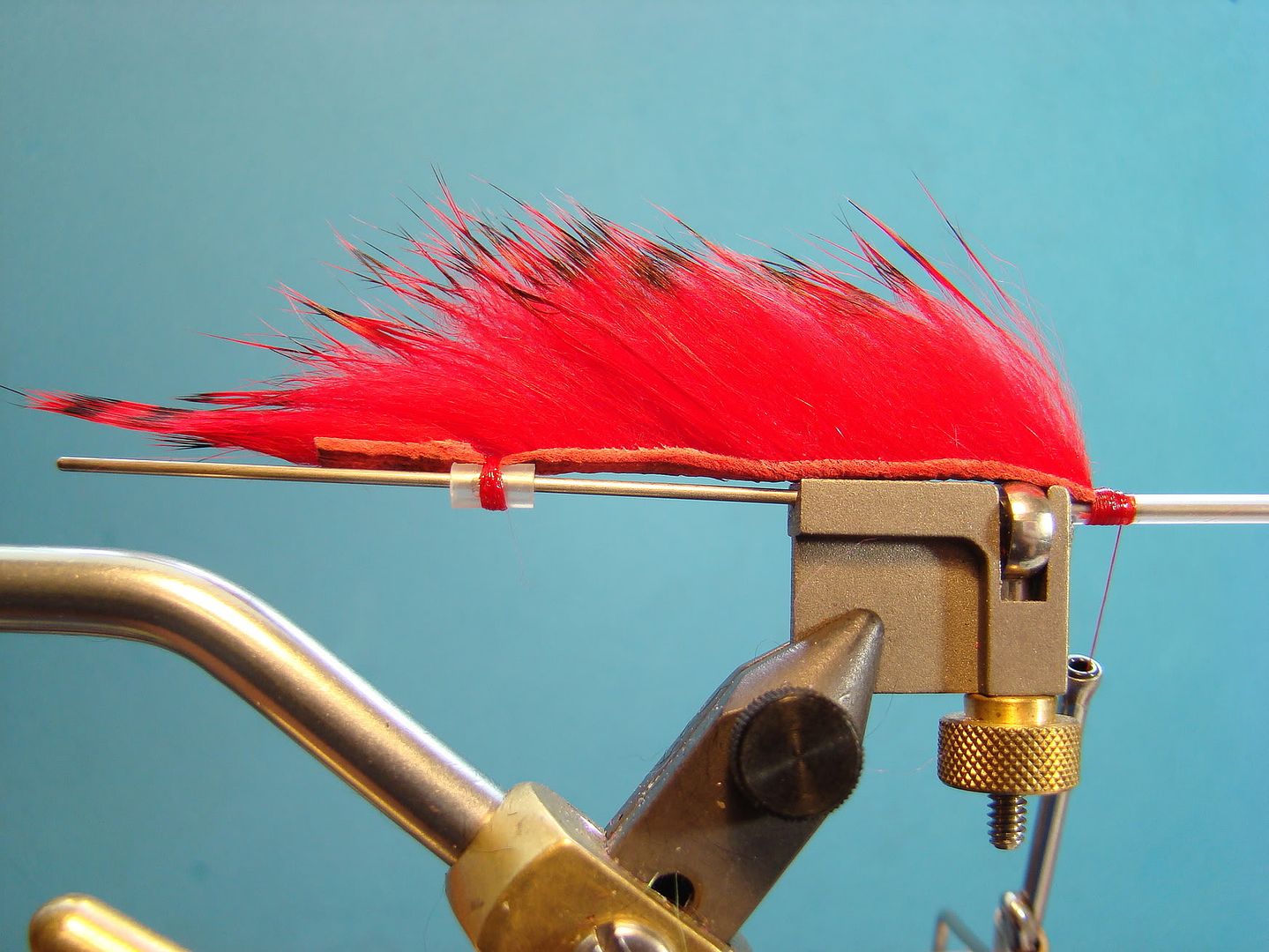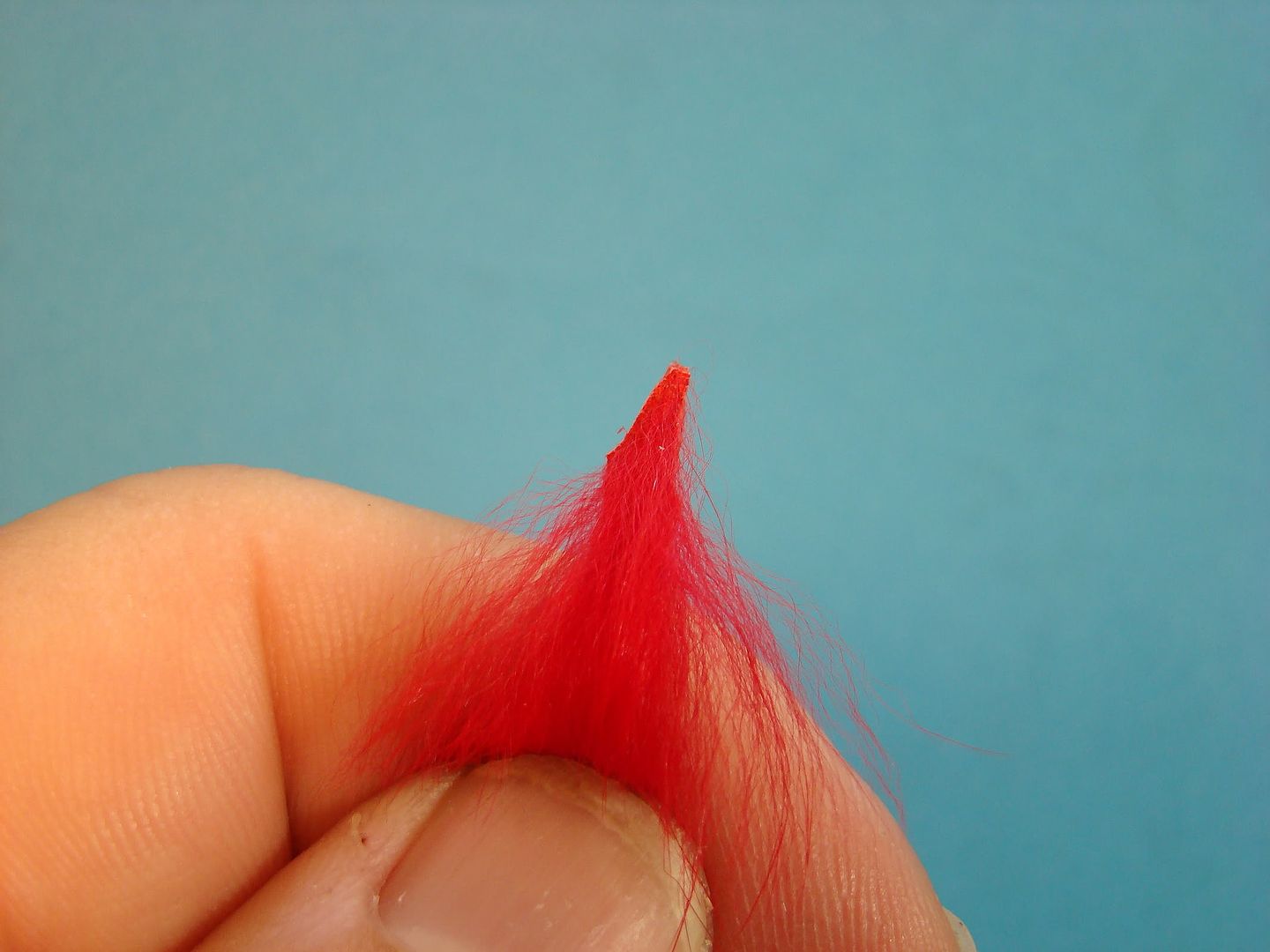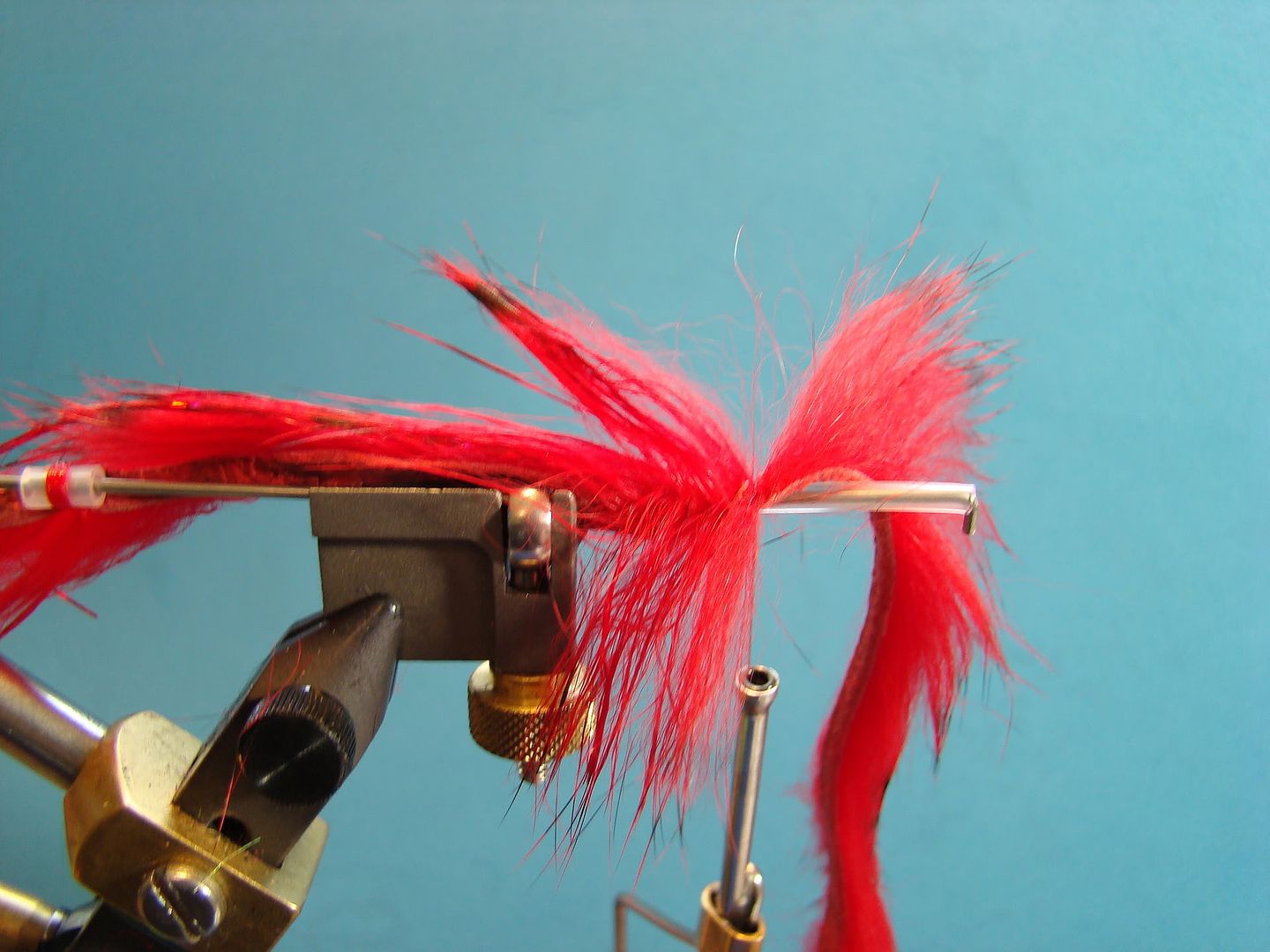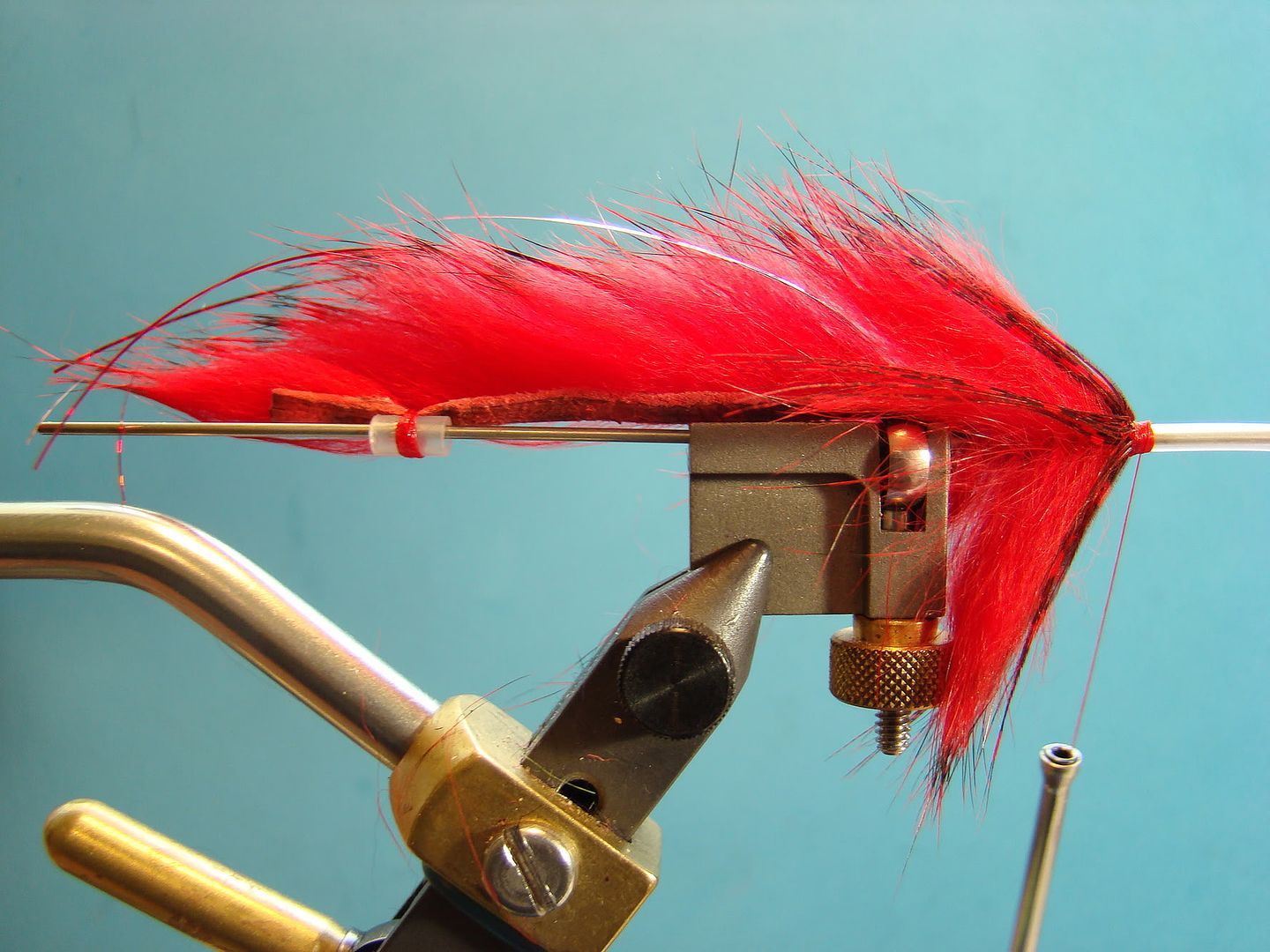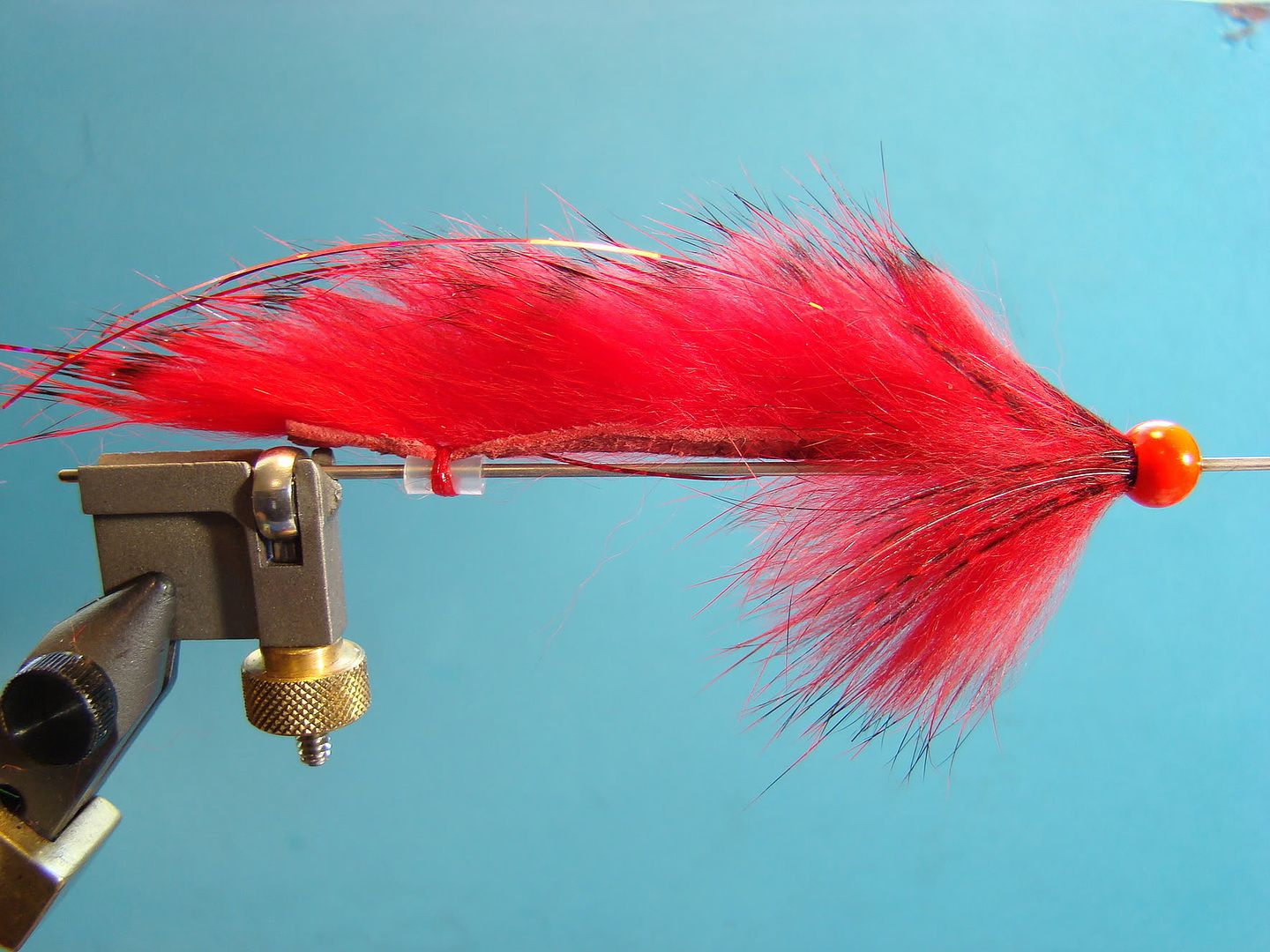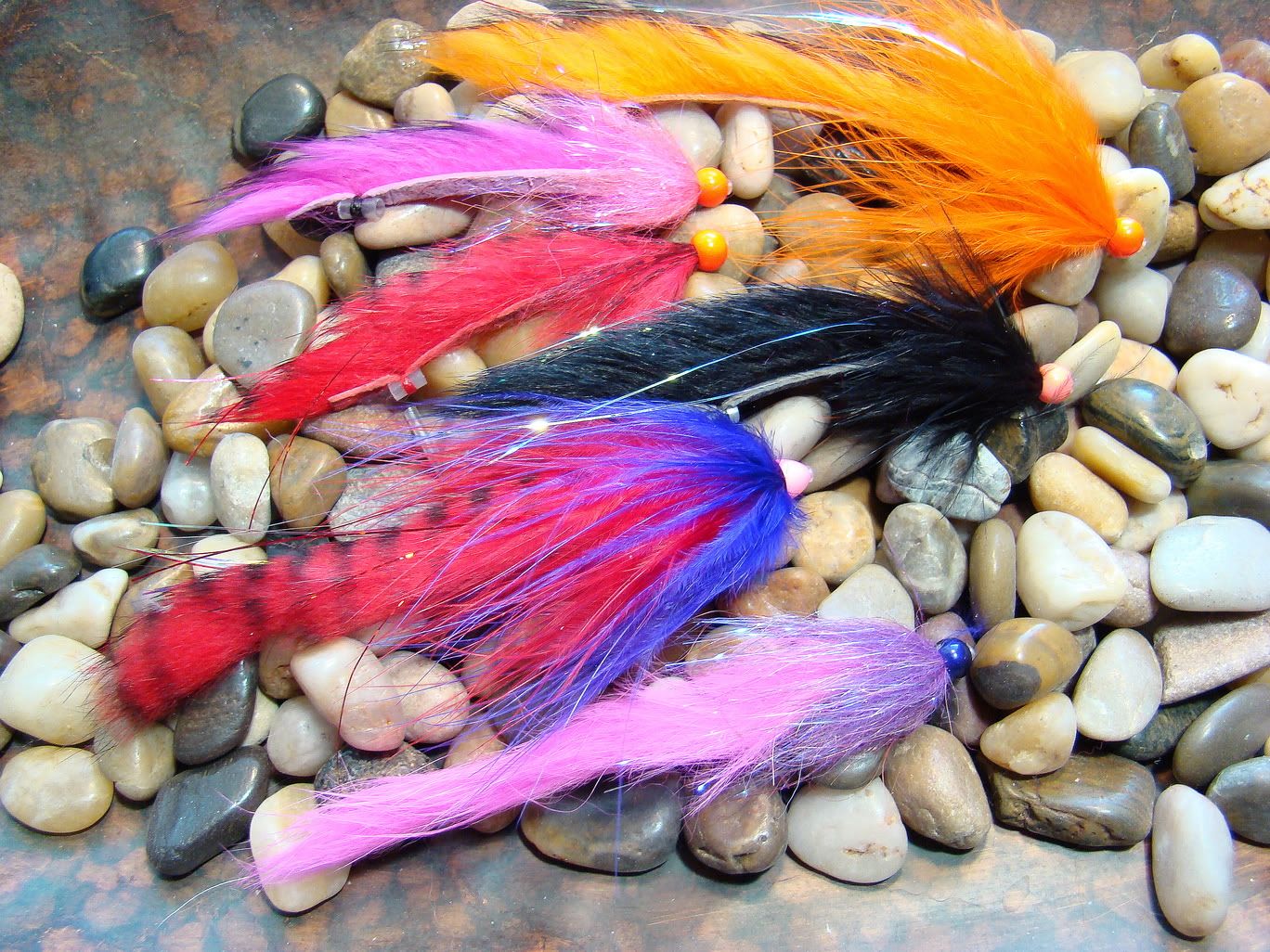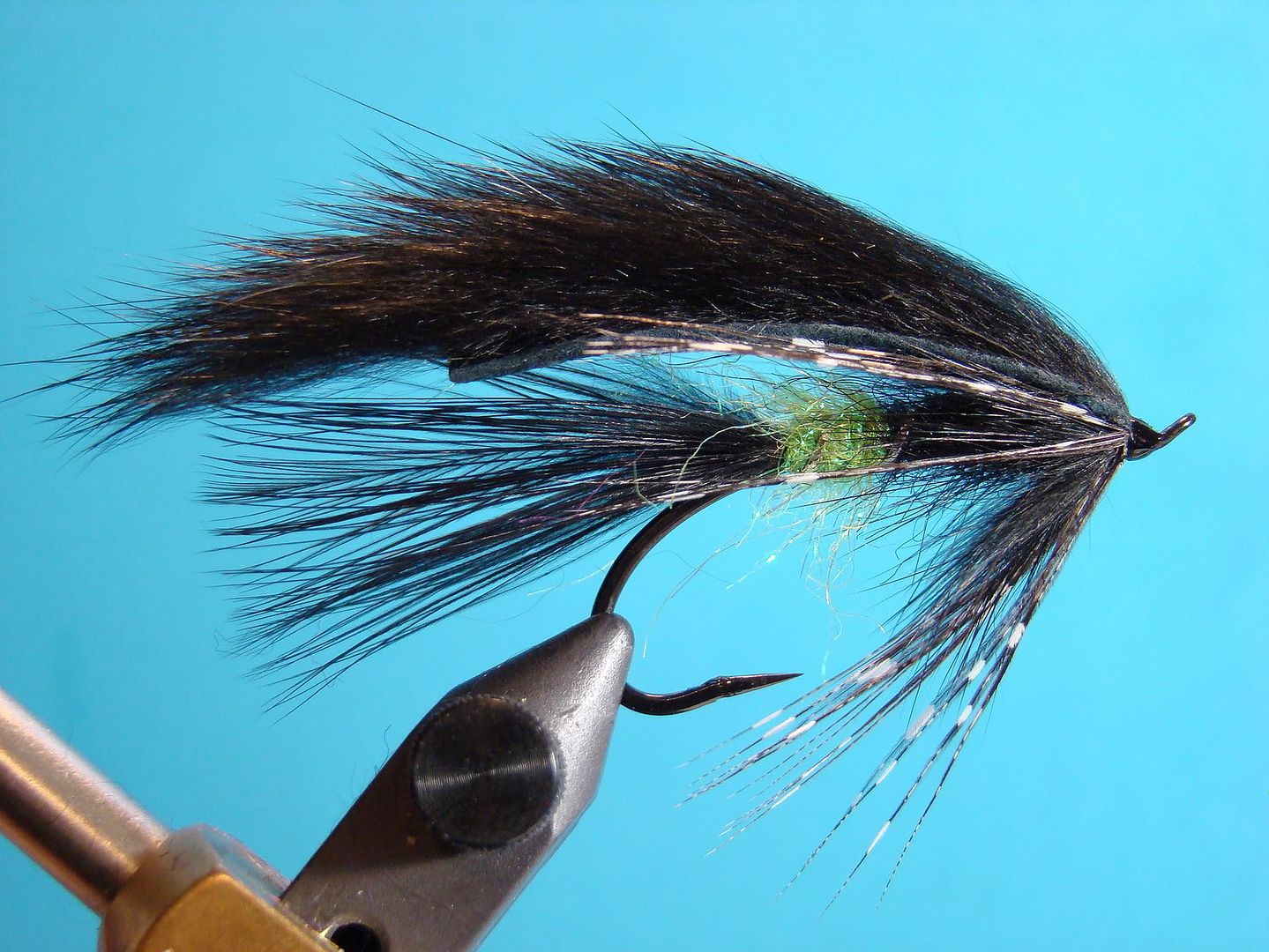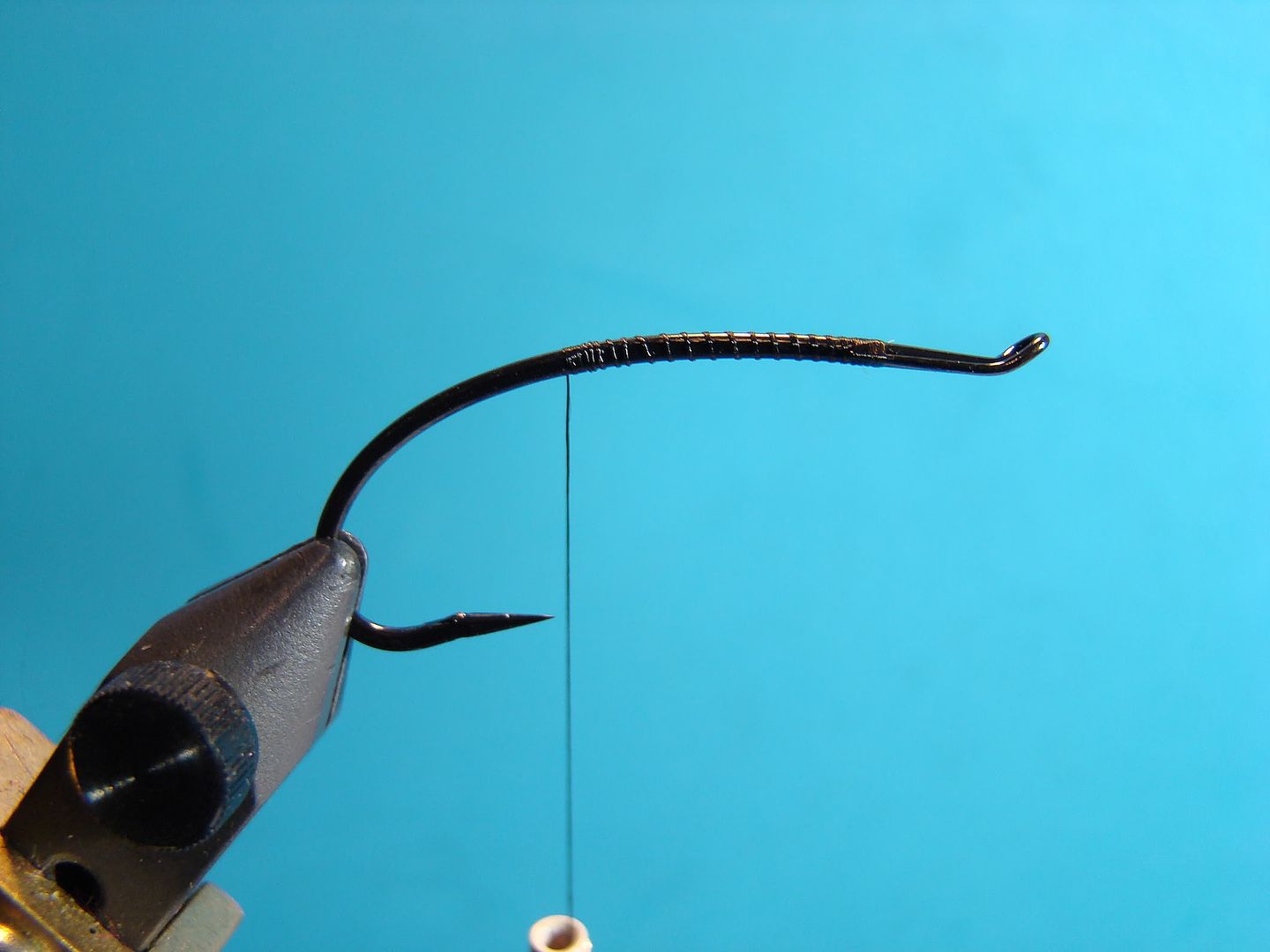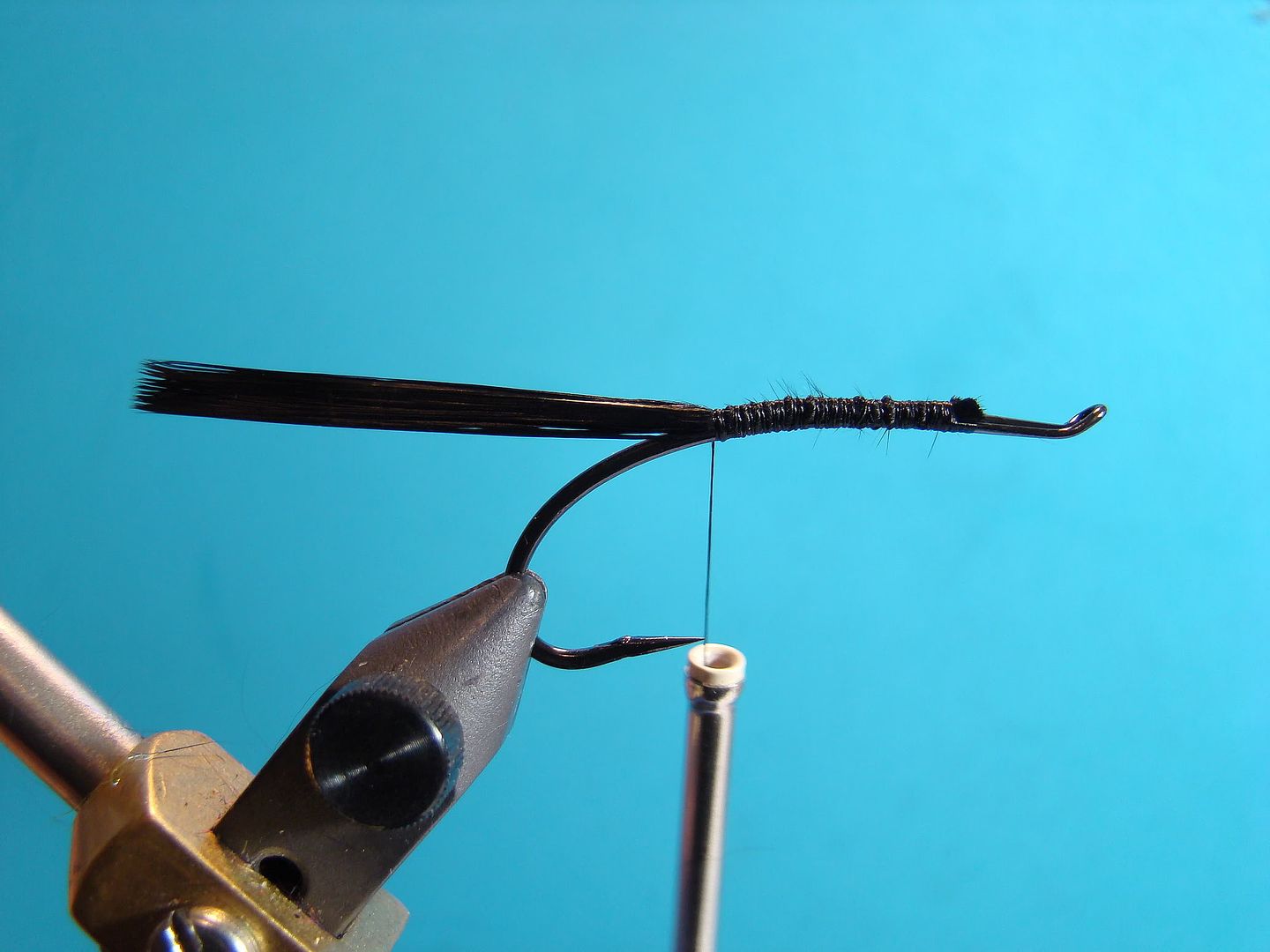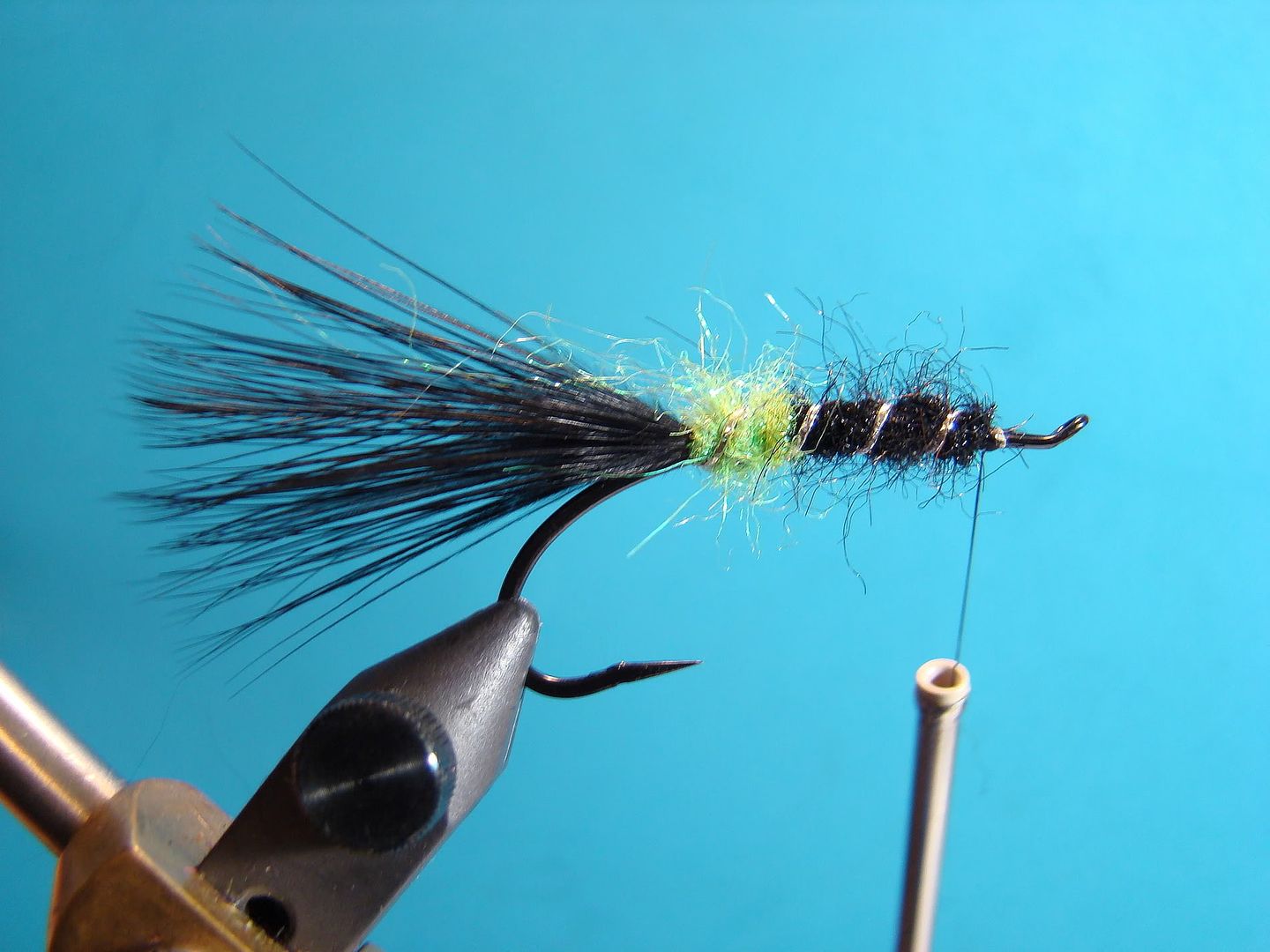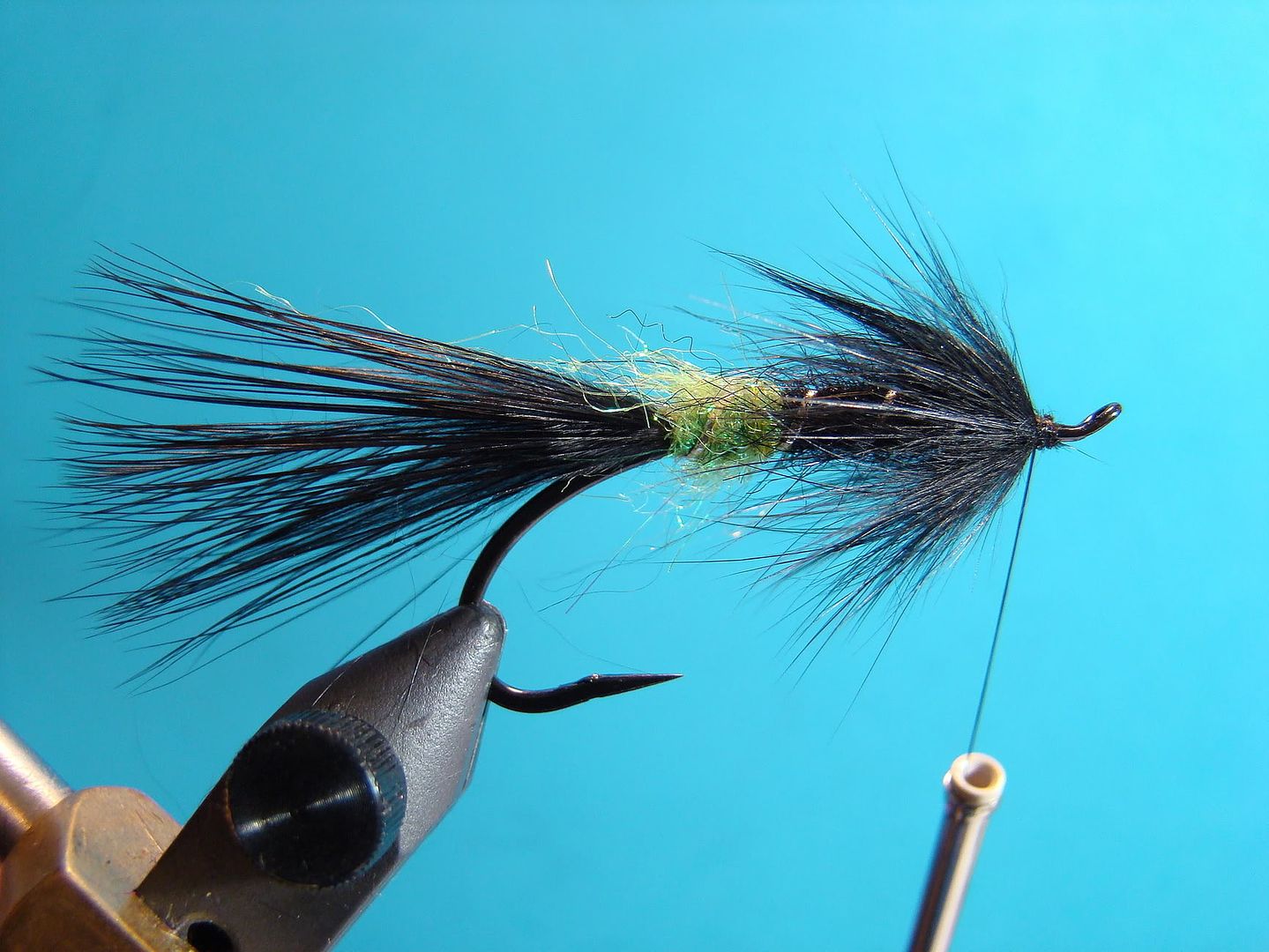Welcome August! As promised I will be tying trout flies this month however, I haven't planned out the specifics. There are so many patterns on the web already... So I'll do flies that are different- maybe an unique technique/style or perhaps some "forgotten flies" of yesteryear.
Let's start out the month with one of my favorites- the GRHE Filoplume Prince. As you might have already guessed this pattern is a combination of the Gold Ribbed Hare's Ear and the Prince Nymph with the addition of filoplume added for a thorax. It is suggestive of many aquatic insects - depending on color and how it is tied (thick or thin) - mainly stoneflies. Try substituting the goose biots with round rubber hackle. I have even had good success with replacing the tail with a tuft of marabou and fishing it in lakes to imitate dragon fly and damsel nymphs. Don't forget to add a bead head! (With the exceptions of caddis nymphs I rarely place a bead on a hook. I personally like to slide the bead on the leader. This has several advantages.) Black, brown, tan, olive, and amber are colors that definitely find their way in to my fly box! The only attribute that remains the same is the white goose biots.
What possessed me to tie this fly? I have no idea. I faintly remember the night... A small group of us headed to the Sacramento River (above Lake Shasta) for the 1994 re-opener after the huge pesticide spill which gained national recognition. We set up camp at Sims Flat and began tying flies under the light of two lanterns on a picnic table and influence of a couple of Crown Royals. The rest is history... Although I had several imitations of golden stones available at my disposal this new fly was a hit. It continues to produce when other patterns fail.
Materials
Hook: Daiichi 1260 or TMC 200R (sizes 6 - 16) (weight to suit)
Thread: 8/0 Euro. Color to match body.
Tail: Goose or turkey biots. Color to match body.
Body: Hare's ear. Color of choice.
Ribbing: X-small Lagartun oval gold tinsel (Copper wire if tied in olive)
Back: Large opal Mirage tinsel.
Thorax: Ringneck pheaseant filoplume feather. Color to match body.
Beard: Hackle to match body color.
Wings: White goose or turkey biots.
Step 1:
Flatten barb. Start thread approximately one eye length behind the eye and wind to rear of hook. Stopping point is approximately above the barb.
Step 2:
Dub a small ball of hare's ear. The ball will help with the "fork" (or "V") effect of the goose biots.
Step 3:
Tie in goose biots. The length of the biots is a personal choice. I prefer approximately one hook gap width.
Step 4:
Tie in oval gold tinsel.
Step 5:
Tie in Mirage tinsel. Ensure it is tied directly down the center of the hook.
Step 6:
Heavily wax thread. Lightly apply/twiste hare's ear on to thread as pictured. Even though the hare's ear has been lightly applied and twisted the hairs will trapped against the hook shank creating a nice shaggy body. This is a neat little time saving dubbing trick... you'll see how.
Step 7:
Wind hare's ear just past the mid way point. You should have approximately 40-percent of the shank exposed. Note the shaggy appearance of the body at this point.
Use you thumb and forefinger to pull the hare's ear down below the shank. This will remove the hairs that didn't get trapped and give you a nice buggy appearance without having to pick out the hairs. Great time saver!
Step 8:
Bring the Mirage tinsel over the back and secure with two light wraps of thread. This will enable you to maneuver the tinsels as you wind the tinsel.
Step 9:
Wind the rib forward.
Step 10:
Select two filoplume feathers from a ringneck pheasant. The rump section will have the best filoplumes. They are found directly behind the main feather.
Tie in the two filoplumes by the bottom portion of the stem. Form a dubbing loop and place filoplume feathers in the loop and spin until a chenille-like dubbing brush is formed. Be careful not to over-spin the filoplume, it is a fragile tying material. Refer to the Summer Hare steelhead pattern for further instructions on filoplume
Moisten the fibers once secured.
Step 11:
Tie in a beard of brown hackle. Pictures is dyed brown partridge. Another option is wrapping partridge (or other feather) a turn or two. I prefer tying a beard- saves time and bulk in the head area. The length of the beard was tied in just past the hook point.
Step 12:
Pattern books will state instructions to tie and show the tips of the biots facing upwards on a Prince Nymph. Personally, I feel it is easier to tie the biots on to the hook with the points facing down due to the natural concave curvature of the biots.
The biots can be tied on one at a time or together. The beginning tyer will find it easier to tie them separately. The important thing on tying the biots to finish the fly is the "V" shape and the length. The length is typically to the end of the body as pictured.
When tying in the biots one little trick to use is taking a couple of soft wraps of thread over the biots and then positioning the boits. Once the biots are in position, slowly tighten the thread and complete the finishing wraps. Head cement and you're finished.
Tuesday, August 2, 2011
Saturday, July 30, 2011
The Steelhead Bunny
Mel Krieger is credited with introducing the Steelhead Bunny to steelhead fishing in the late 1960's. He got the ideal during a trip to New Zealand where the locals were using rabbit strips tied Matuka style over various body colors. Krieger then tied his rabbit strip as a replacement for rubber worms he used for bass fishing. Soon he began casting his leech pattern for trout and it wasn't long before the pattern eventually made it's way in the steelhead realm.
The original Steelhead Bunny tied by Mel was a very simple fly. Red thread coated the hook for the body and then the rabbit strip was first tied in towards the eye of the hook. Next, the rabbit strip was then tied to the shank at the mid way point and again at the area above the hook point. To complete the fly, another strip was attached and wound as a collar- usually one turn.
It is believed that Les Johnson was first to wrap the entire body with a rabbit strip. It is safe assume that Les was looking to save time at the bench, possibly a fuller silhouette, or perhaps looking for certain tail/body color combinations. Nonetheless, little did he know at the time, his style is now the standard for Steelhead Bunny's.
The rabbit strip remains as a "must have" material to compliment a great steelhead fly. Rest assured the Bunny Leech is one of the deadliest and should be in your fly box; whether tied on a hook, MOAL (Mother of all Leeches) style, or a tube! So let's take a look at perhaps the simplest steelhead fly to tie.
I have also added pictures showing a few different color combinations and styles to help get the creative juices flowing at the end of the blog.
Materials:
Hook: Alec Jackson (or choice)
Thread: 6/0 Euro (color to compliment fly)
Tail: Rabbit strip (color of choice)
Body: Rabbit strip (color of choice)
Collar: (Optional)
Note: I do not add weight or beads to the Steelhead Bunny when tied directly on a hook. I feel this adversely affects the action of the fly in the water.
Step 1:
Start thread on the returning loop of hook. Wind to the back. Note that I have close wraps at the back. This will keep the rabbit strip tail from rolling around the hook shank when tied in.
Step 2:
Select rabbit strip (color of choice). As a general rule of thumb, the length of strip should not be more than one hook length (pictured). (Again, I prefer the tails a little shorter to avoid short strikes.) Cut a point in to end of the strip (see Steelhead Matuka). Apply a drop or two of head cement to thread wraps on back of hook shank. Secure tail with several wraps. Add flash material of choice (optional). Once tail is secured, add another drop or two of head cement.
Step 3:
Select rabbit strip (color of choice) and cut a tapered edge as pictured. This cut will allow for a smaller tie in area and an easy transition when wrapping the strip without a big bump/hump at the back of the fly.
Tie rabbit strip in by the tip. Next, apply a little head cement to previous thread wraps and coat the hook shank. This will adhere the strip to the hook shank prolonging the life of the fly. Note the easy transition of thread on the hook shank after tying the the strip.
Step 4:
Wrap rabbit strip to a spot just behind the eye of the hook and secure. Each wrap should touch the previous wrap without over-lapping. I have stopped short because I am going to finish with a collar of rabbit hair spun in a loop. This will give me a nice professional looking head without the bulk normally associated with securing and finishing with the strip/hide material. This would also be a great time to add additional flash highlights (optional)
Step 5:
Make a dubbing loop and spin a collar of rabbit (color of choice). Once the collar is complete, whip finish. Combing the hair is a good idea to remove any hair that became matted during the tying steps. (I also carry a small comb streamside and comb out the rabbit hair patterns prior to fishing. This maximizes the action of the hair in the water.)
Step 6:
Apply head cement.
For an unique two tone look, wrap a body and then apply a strip over the back. E.g., once the body is wrapped, split the hairs evenly and draw them down under the shank.
Tie in strip by the tip, whip finish, and trim thread. Moisten hair and draw down and forward to make room for the thread.
Start thread directly behind body. Firmly tie down strip and whip finish. Trim thread.
Once the strip is secured, comb hair back.
I've added some flash highlights and a collar of rabbit hair.
Here's a few additional ideas for you... These are proven steelhead patterns!
Orange and black
Black and blue - instead of finishing with a collar of rabbit hair, I elected to use a Chinese rooster feather. I utilized the bottom portion of the feather - half fibers/half fluff.
Purple and pink - I added a pink rabbit collar and hot pink Guinea
Red and black - Black barred red rabbit and black collar.
Orange/red/purple/black - Tie in orange tail. In four sections I spun rabbit in a dubbing loop- orange red, purple and black.
You probably noticed I didn't write about utilizing cross cut rabbit strips. I only use them on smaller trout size patterns and prefer to use normal strips for the added bulk (cross cut strips tend to lack a lot of under fur). Besides, the hair can be trained to lay flat with a liberally amount of water, combed, and then dried during and after the tying process.
Have fun at the tying bench. There's plenty of color combinations and ideas left to explore!
Wednesday, July 27, 2011
Swinging Flies in Southwest Washington - 27 July 2011
What's a guy to do with a little time off? Fish! Alarm set for 3:00AM and on the river by 5:30AM. Water level perfect for a Skagit head, 7 1/2-feet of T-14 MOW tip.... I didn't get great hook sets on the first two fish, but the third tug of the morning shot 3-feet into the air approximately 90-feet downstream!
Intruder (black and blue)
No tugs for the next three hours so I decided to eat a little lunch, sharpen some hooks, and relax a little in the shade. Changed over to a 3-inch black Silvey's Tandem Tube. Mid way through the run- SLAM! One of the best fighting hatchery fish to date!
Silvey's Tandem Tube (black flanked by two strands of blue holographic flash each side, hot red bead)
Awesome day in the Pacific Northwest! Two fish in the cooler and back home in Gig Harbor before rush hour.
Enjoying a nice cold Lunazul margarita, BBQ is lit off, a little Dungeness crab and fresh steelhead for dinner! Any takers?
Intruder (black and blue)
No tugs for the next three hours so I decided to eat a little lunch, sharpen some hooks, and relax a little in the shade. Changed over to a 3-inch black Silvey's Tandem Tube. Mid way through the run- SLAM! One of the best fighting hatchery fish to date!
Silvey's Tandem Tube (black flanked by two strands of blue holographic flash each side, hot red bead)
Awesome day in the Pacific Northwest! Two fish in the cooler and back home in Gig Harbor before rush hour.
Enjoying a nice cold Lunazul margarita, BBQ is lit off, a little Dungeness crab and fresh steelhead for dinner! Any takers?
Saturday, July 23, 2011
Silvey's Tandem Tube
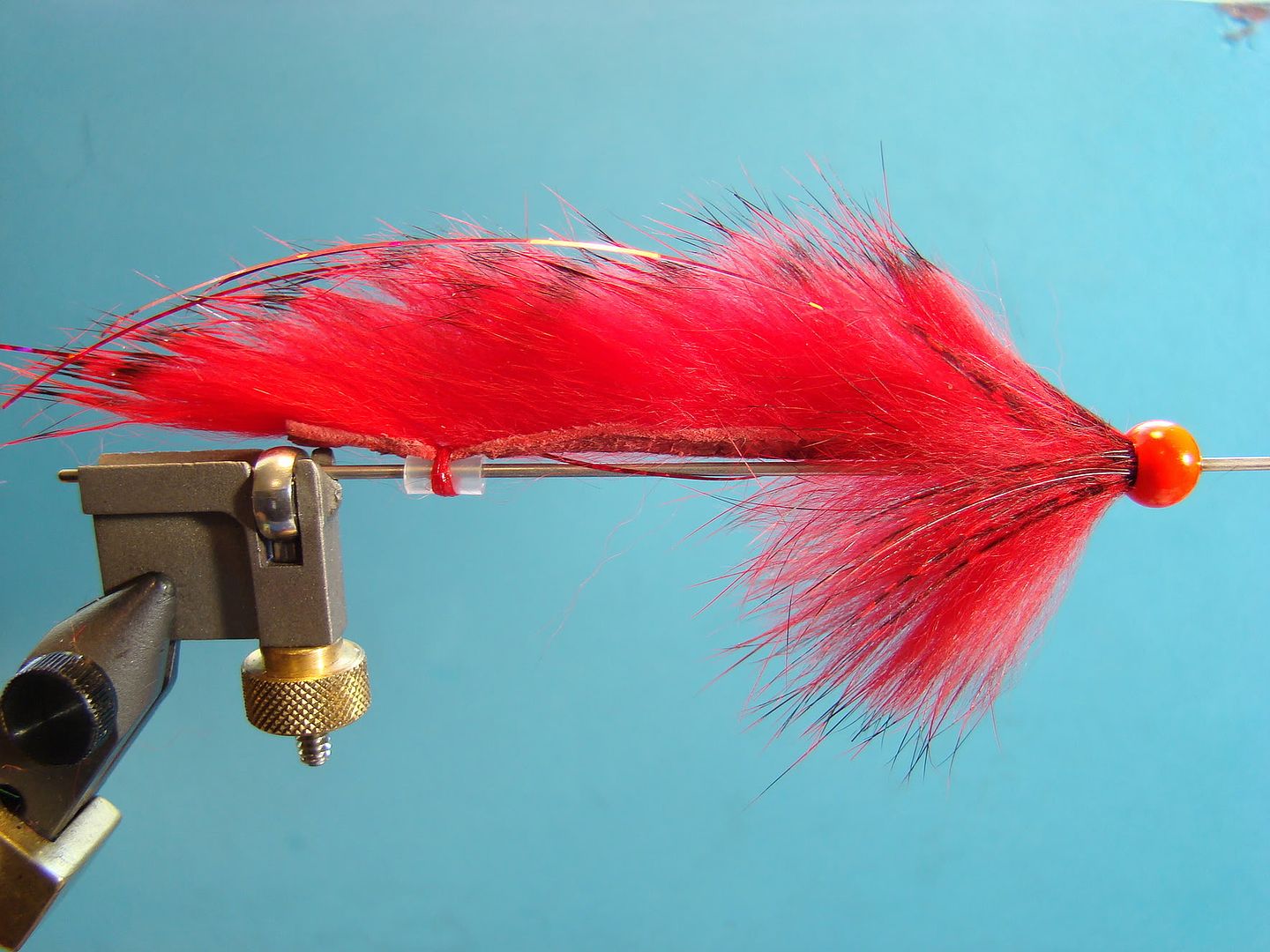
The original String Leech, sometimes referred to as the Strip Leech, is nothing more than a rabbit strip attached to extra stout cobbler's (showmaker's) thread. First, the hook is snelled followed by tying a loop to connect the leader at the other end. The length of the thread is dictated by how long of a strip was going to be tied. In order to tie the strip on the thread had to be brought under tension. Once tension was accomplished Flashabou was tied on first followed by the strip. That's it! A super simple, but highly effective fly. The fly proved to be a knockout, however, there were some issues. First, how to get the fly to sink. This was an easy fix. An angler simply attached a split shot or two to the thread behind the head. The main issue was lateral separation of the hook from the strip. Once the fly swung into softer water the hook dropped away from the strip resulting in a lot of missed strikes. Although tying the hook to the strip proved helpful, many times the hook would foul during the cast. If you ever get a chance to gaze into an old timer's fly box, you might just see a few to this day!
Credit for this awesome steelhead tube fly goes to noted Pacific Northwest guide and talented tier, Brian Silvey. Brian solved the long time dilemma of the hook dangling below the rabbit strip on the String Leech by attaching a small section of tubing towards the rear of the strip. I have embedded a video (the best I could find) explaining the reasoning of two different sized tubes as well as showing the rigging of this fly at the end of the tying instructions.
There are numerous positive attributes to this fly: endless color and material combinations, various sizes it can be tied, very easy to cast, superlative action in the water, and effective hook sets.
The majority of tandem tubes are tied with schlappen as a collar however, keep in mind you have several options available. Although I occasionally tie these flies with schlappen, I prefer to use rabbit. When I want a longer fly I will tie the collar with marabou for a even more robust silhouette. If you add grizzly saddle to these longer flies tied with marabou they are called Tube Snakes.
Material
Thread: 6/0 color of choice
Tubing: HMH 1/8" O.D. and 1/16" O.D.
Body: Rabbit strip color of choice
Collar: Schlappen, rabbit, or marabou color of choice
Head: Cone or bead
Step 1:
Cut a 3/16" piece of 1/8" O.D. tubing and insert on mandrel. Start thread.
Step 2:
Add a small drop of Super Glue to the top of the tube. Separate hairs at the tie in position of a precut rabbit strip (I am utilizing a 2 1/4-inch strip for this demonstration.) Moistening the hair will help tremendously. Secure strip to tube. Ensure you haven't trapped any hairs.
Step 3:
Hand whip finish and apply head cement. Remove tube from mandrel.
Step 4:
Cut a 1-inch section of 1/16" O.D. tubing and place on mandrel. Start thread at the read of the tube as pictured.
Step 5:
Slide the rear tube back on the rear of the mandrel. This will keep the rear materials from dropping and/or getting in the way. Additionally, this helps with keeping the strip centered on the mandrel. Next, tie in the forward portion of the strip with very tight wraps. Apply head cement. Add 3 strands of Flashabou or similar flash material to each side.
Step 6:
Prepare the forward portion of the rabbit strip by cutting in at an angle. This will ensure a small tie in area and smooth underbody.
Step 7:
Tie in strip by tip and wrap forward. Each wrap should be directly in front the the previous wraps. Overlapping will suppress the hairs. The amount of wraps is a personal choice, but 3 to 5 is more than sufficient. Too many wraps will deaden the fly's actions in the water. (Pictured is 5 wraps.) Note: I have moistened the hair to keep it manageable. Secure strip and trim away excess.
I have elected to add an additional collar of red guinea.
Step 8:
The final step is removing the fly from the mandrel and adding a bead. Push the bead firmly on to the fly. Cut away excess tubing leave approximately 1/16". Place the head back on the mandrel from the rear. The tip of the mandrel should be sticking out just past the end of the tube. Apply heat from a lighter. Utilize the coolest part of the flame (blue in color.) The edge of the tube will roll back locking the bead in place.
Ready to tie and fish one of the deadliest steelhead flies?
I tie and fish various sizes from 2 1/2" to 5" accordingly - smaller sizes in summer and fall, larger sizes in winter and spring or when water conditions dictate.
A small collection of various styles and sizes.
Thursday, July 21, 2011
Bulkley River Samurai
Trey Combs, author of Steelhead Fly Fishing (1991), mentions of the Bulkley River Samurai, "I first saw this leech pattern in use on the Kispiox in 1987. A few anglers and a couple of guides were fishing it and remaining very closed-mouthed about, one of those "secrets" that couldn't last, and didn't. " "Basically this big silhouette pattern is a Matuka in which the end is not secure, the strip of rabbit waving in the current and giving the fly tremendous action."
The original "Samurai" was tied as a conventional Woolly Bugger (marabou for the tail, chenille body palmered with hackle) with a rabbit strip tied in over the top that was longer than the tail. A few strands of Flashabou or Krystal Flash were also added to the tail, and in some cases, additional flash was added under and/or over the wing. The only attribute lacking in the original is counter-wrapping the palmered hackle with wire (or heavy thread), which I strongly recommend. If you can tie a Woolly Bugger, you can certainly tie the "Samurai."
Because of it's larger silhouette, the "Samurai" is generally classified as a winter pattern. However, I am finding myself using this pattern in smaller sizes a lot more during the summer months in the early or late evening hours when I need a visible fly. Let's have a go with my variation which lacks the chenille body and palmered hackle, but adds two unique collars.
Because of it's larger silhouette, the "Samurai" is generally classified as a winter pattern. However, I am finding myself using this pattern in smaller sizes a lot more during the summer months in the early or late evening hours when I need a visible fly. Let's have a go with my variation which lacks the chenille body and palmered hackle, but adds two unique collars.
Materials:
Hook: Alec Jackson Steelhead Iron (size 5 pictured)
Thread: Color of choice.
Tail: Marabou - color of choice
Body: Chenille or dubbing
Rib: Medium oval silver
Collar: Rabbit spun in a dubbing loop followed by 2 or 3 turns of guinea. Spey hackle can be substituted in place of guinea.
Wing: Rabbit strip
Step 1:
Start thread at the rear of the returning wire loop and wrap back to the hook point.
Step 2:
Tie in marabou. A common tail length proportion is one body length. Although this goes against my "rule of thumb" on tail lengths, I generally tie the tail a little longer- one hook length. Wetting or moistening the marabou makes working with this material much easier.
Step 3:
Tie in the oval tinsel to the backside of the hook shank.
Dub in a small section of "hot" dubbing (approximately 1/3 of the overall body length). Pictured is chartreuse Ice Dubbing, but other effective colors are fluorescent pink, orange, red, and yellow. The forward section of the body should be the same color as the tail. Pictures is black SLF. (A solid color body can be utilized too.) Note my stopping point is the same as my initial thread starting point. This will give me plenty of room to work in the rabbit and guinea collars as well as securing the rabbit strip.
Step 6:
Place rabbit is a dubbing loop. (please visit the Steelhead Matuka blog page for directions.) My lengths for this method of tying in collars is usually longer, but with the "Samurai" I want to keep the "hot" section visible. A good reference would be matching the tips of the guards hairs with the middle of the "hot" section or little shorter.
Tie in guinea feather by the tip and take 2 or 3 turns. The length should extend to the end of the hook. I also remove one side of the fibers. The addition of both rabbit and guinea not only adds aesthetics to the pattern, but gives more movement in the water plus a little support for the rabbit wing.
Cut the tie in point of the strip in to a point and secure to hook shank. (Please visit the Steelhead Matuka blog page for reference.)
The end of the strip should be cut to approximately half a tail length and should be done after the strip is tied in. This will give the fly a nice proportional look, and when wet, the tail and wing will give a nice tapered appearance.
If you have tied with rabbit strips you know it can be tough to finish with a nice, neat and small head. The trick is securing the strip with the smallest portion of the point possible. I take 5 to 7 very tight turns to secure the strip, tying from the hook eye to the rear to cover the hide portion, and then apply a small drop of super glue. While the glue is drying I'll remove the excess (towards the hook eye) with a razor blade. Once the glue is dry complete the head with as few as wraps possible. Finish with a few coats of head cement.
Note: The addition of the two collars will help support the strip and keep it off the fly's body in the water. Additionally, when you initially tie in the strip, ensure your wraps are tight and as close as possible to the two collars and guinea feather stem without compressing the fibers. This will slightly lift the strip maximizing the wing's movement.
The end of the strip should be cut to approximately half a tail length and should be done after the strip is tied in. This will give the fly a nice proportional look, and when wet, the tail and wing will give a nice tapered appearance.
If you have tied with rabbit strips you know it can be tough to finish with a nice, neat and small head. The trick is securing the strip with the smallest portion of the point possible. I take 5 to 7 very tight turns to secure the strip, tying from the hook eye to the rear to cover the hide portion, and then apply a small drop of super glue. While the glue is drying I'll remove the excess (towards the hook eye) with a razor blade. Once the glue is dry complete the head with as few as wraps possible. Finish with a few coats of head cement.
Note: The addition of the two collars will help support the strip and keep it off the fly's body in the water. Additionally, when you initially tie in the strip, ensure your wraps are tight and as close as possible to the two collars and guinea feather stem without compressing the fibers. This will slightly lift the strip maximizing the wing's movement.
Let the imagination flow! Try the darker colors for dark days and low light conditions (add an hot butt if desired), bright colors for bright days in winter, fluorescent colors for stained or off color water. Give an all white pattern a shot too. You might be surprised!
I'll attempt to knock out two more deadly rabbit strip patterns this month before moving on to trout flies in August.
Subscribe to:
Posts (Atom)
